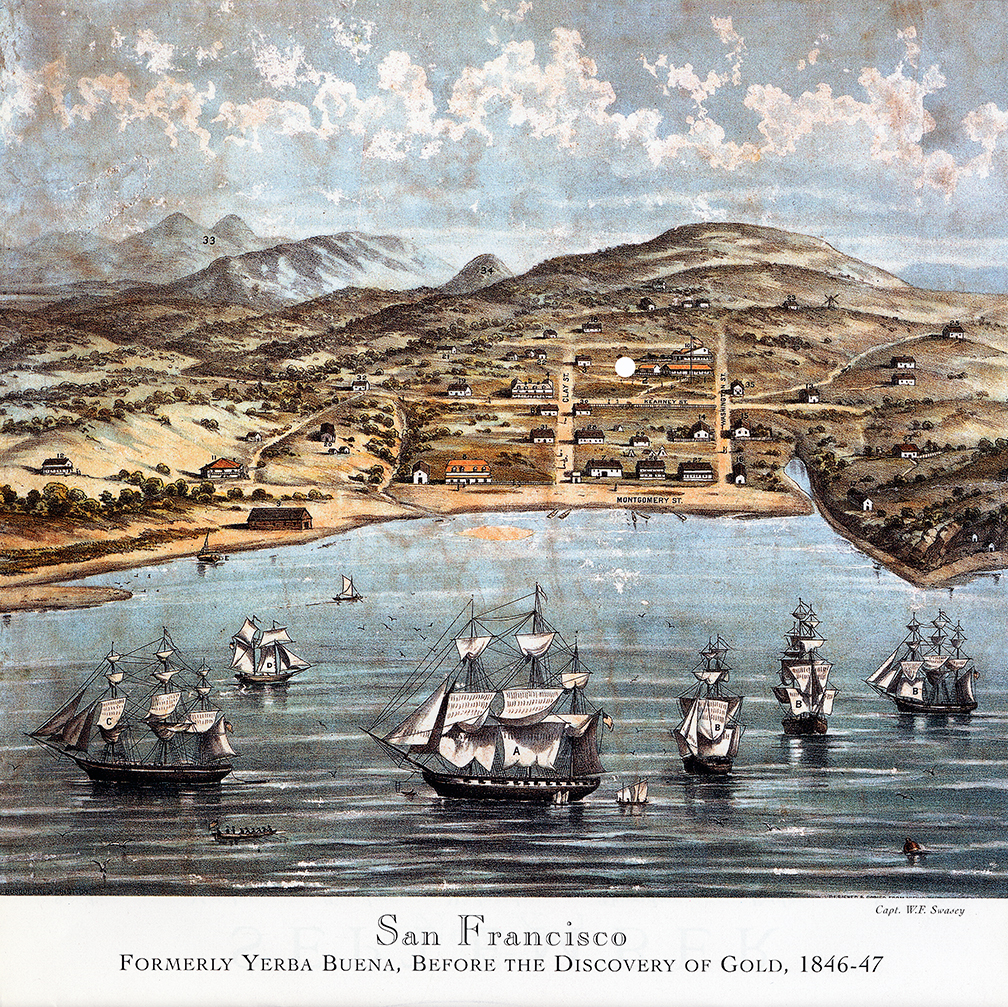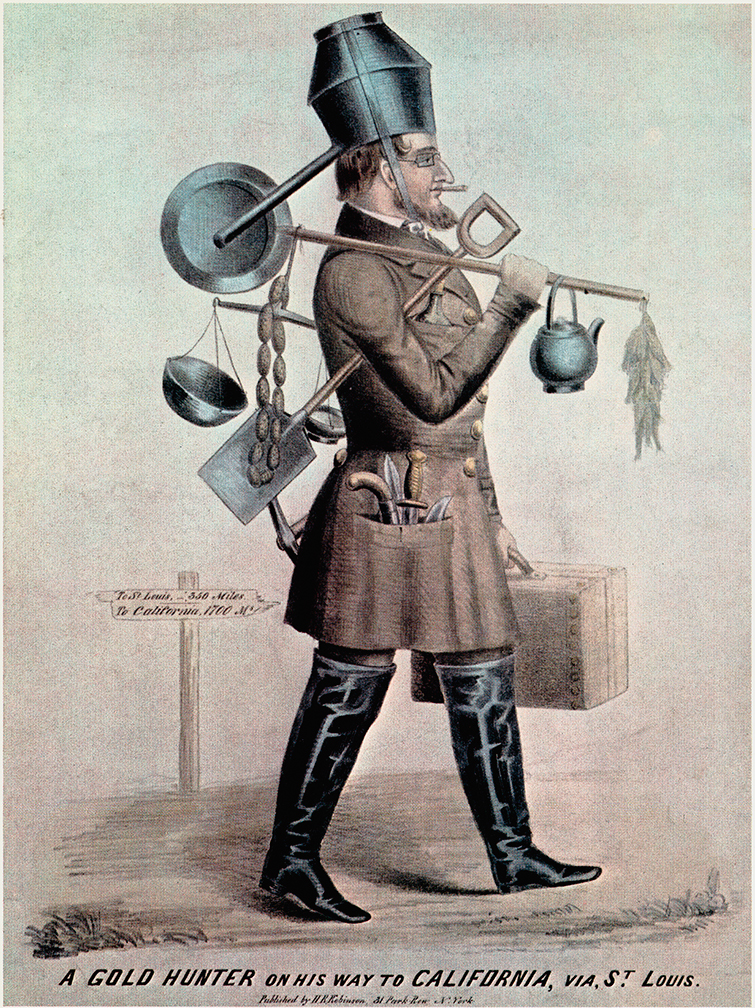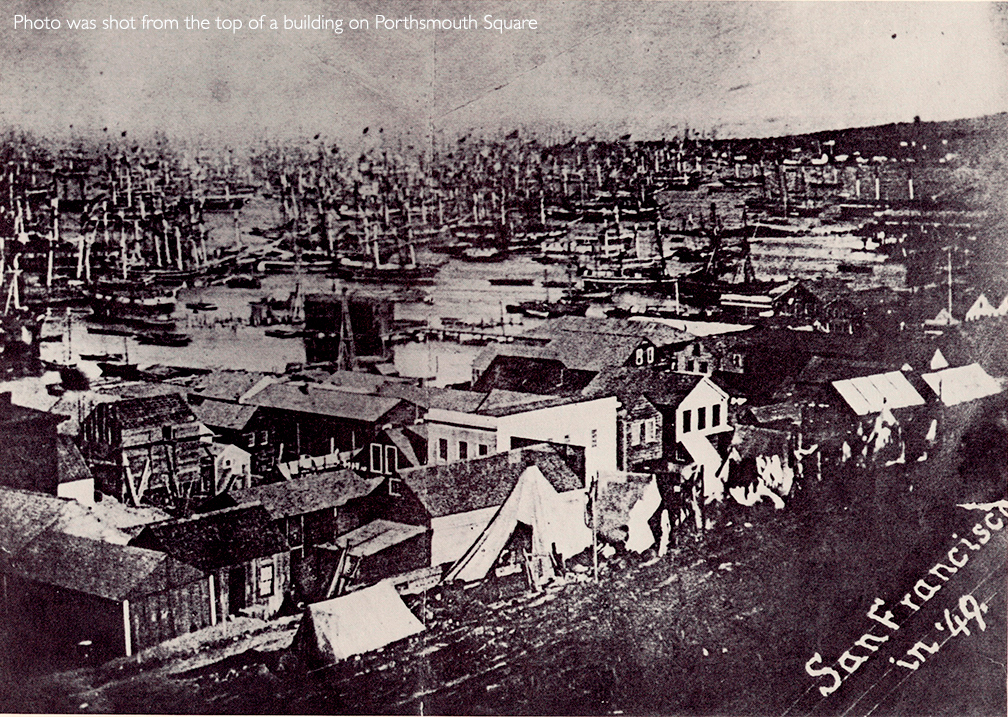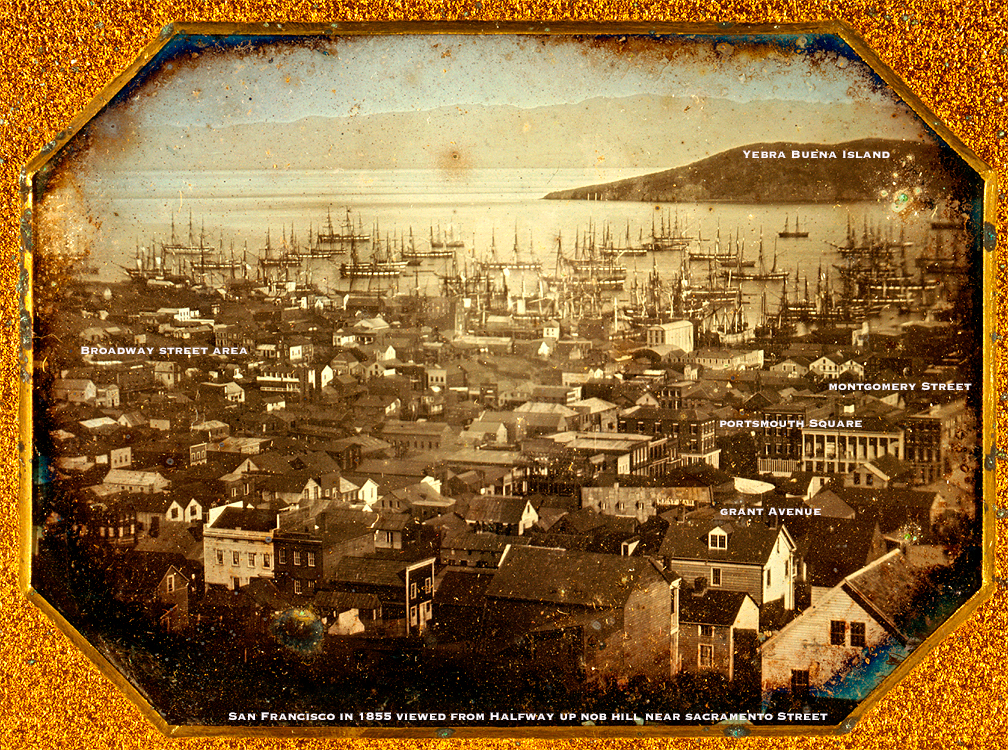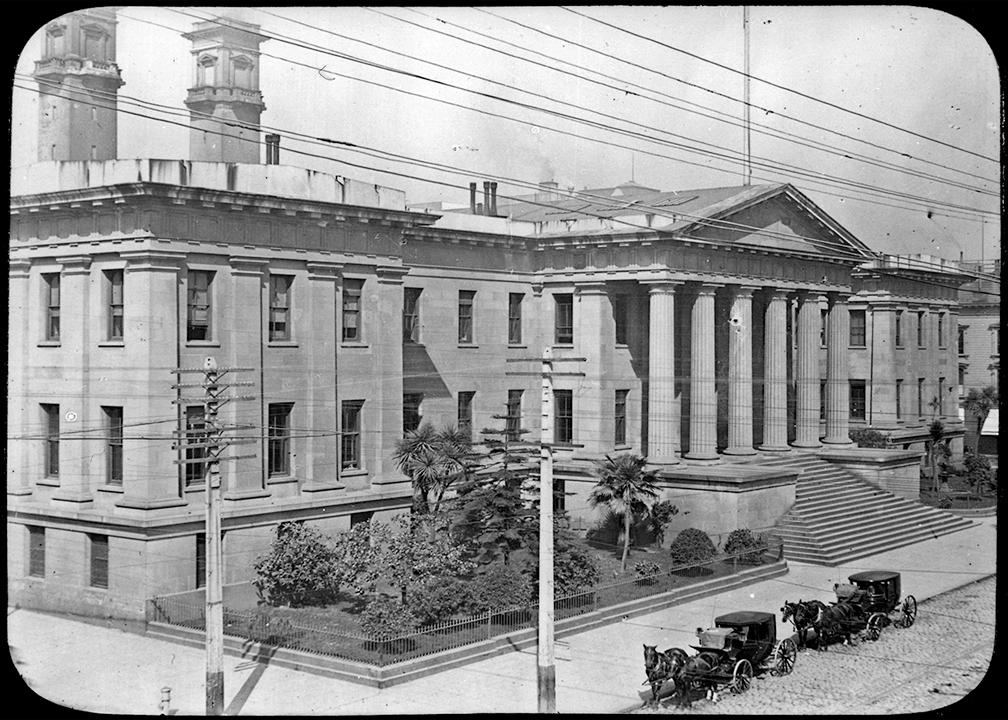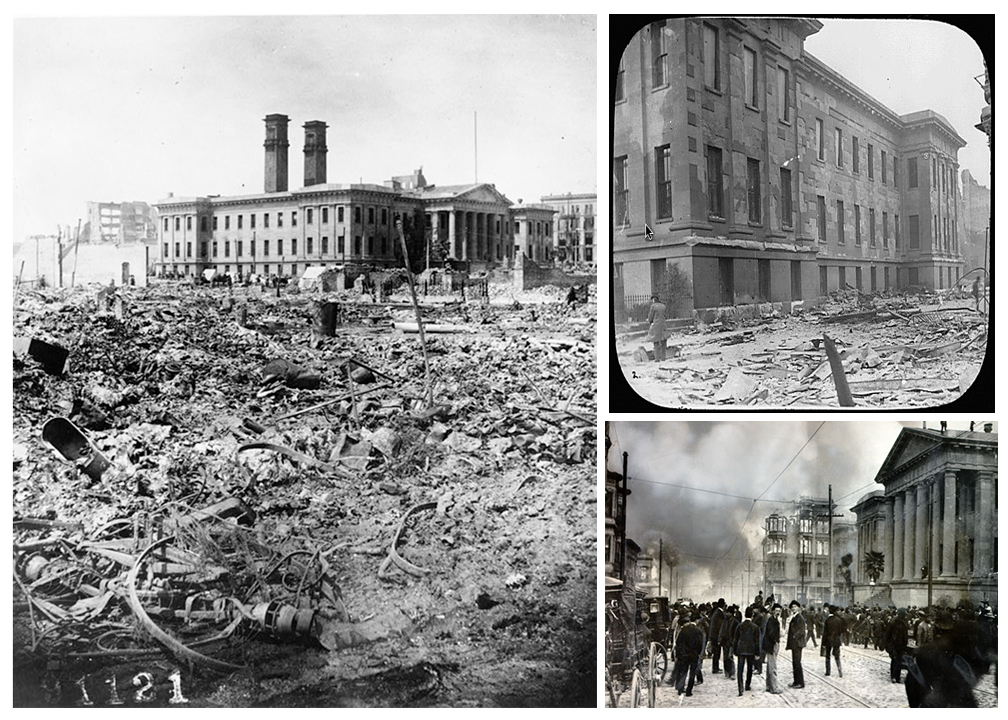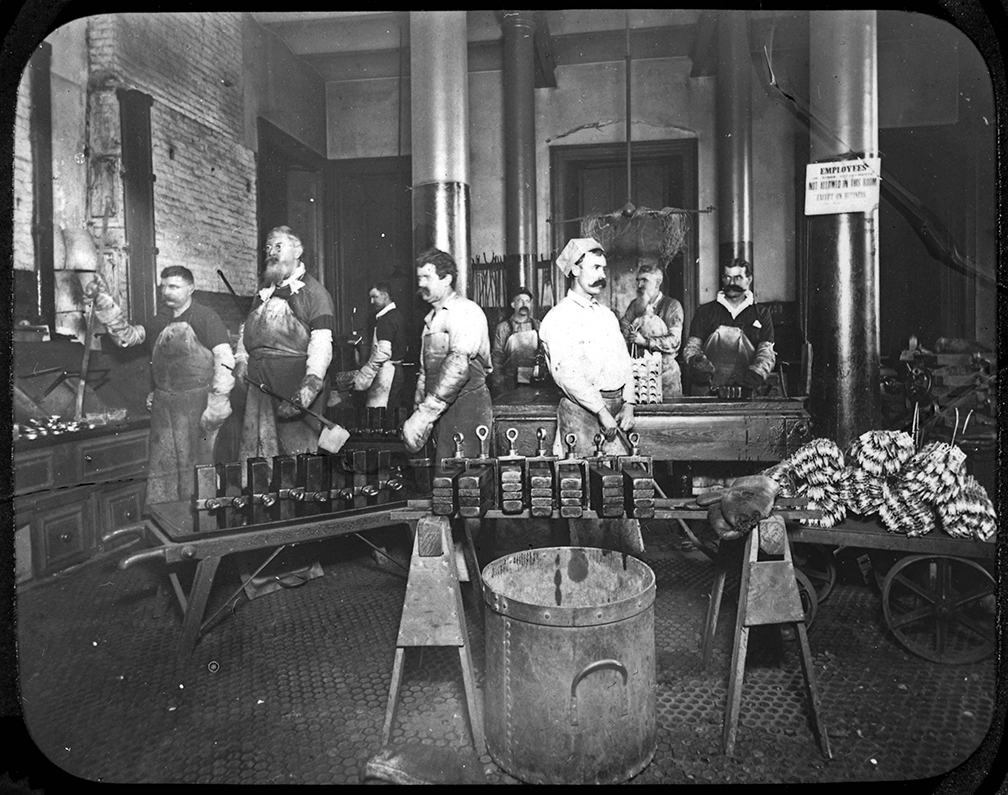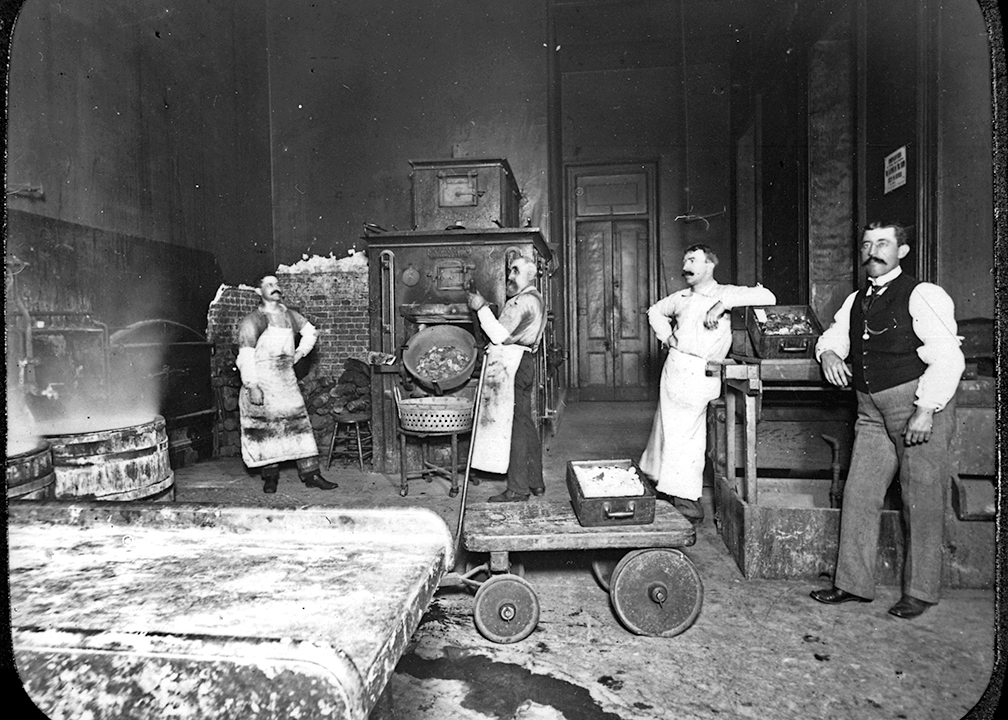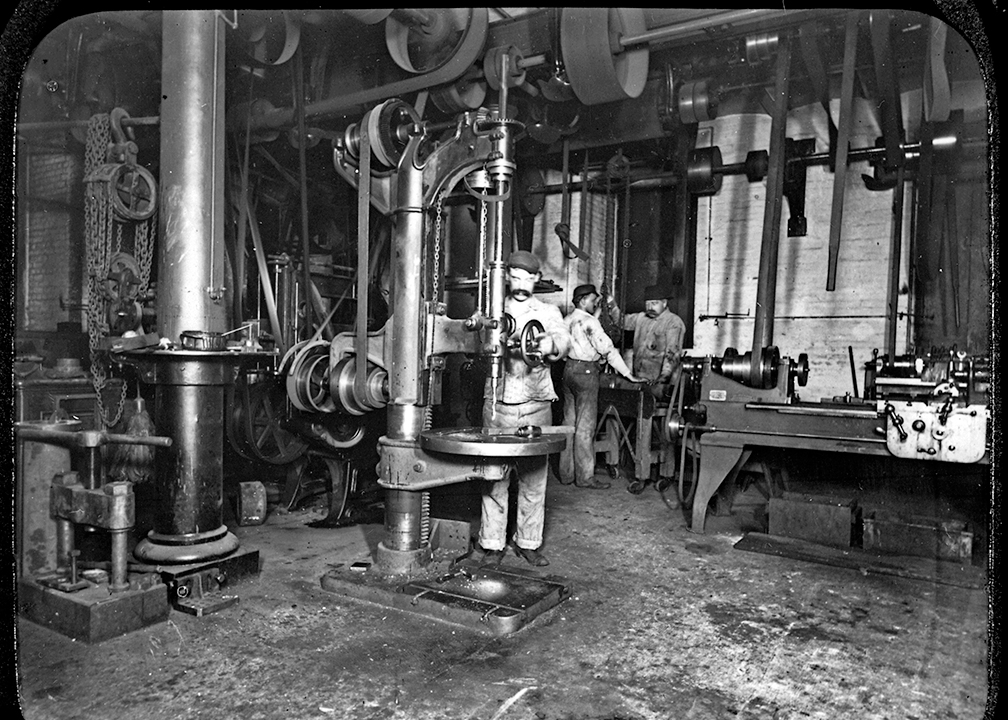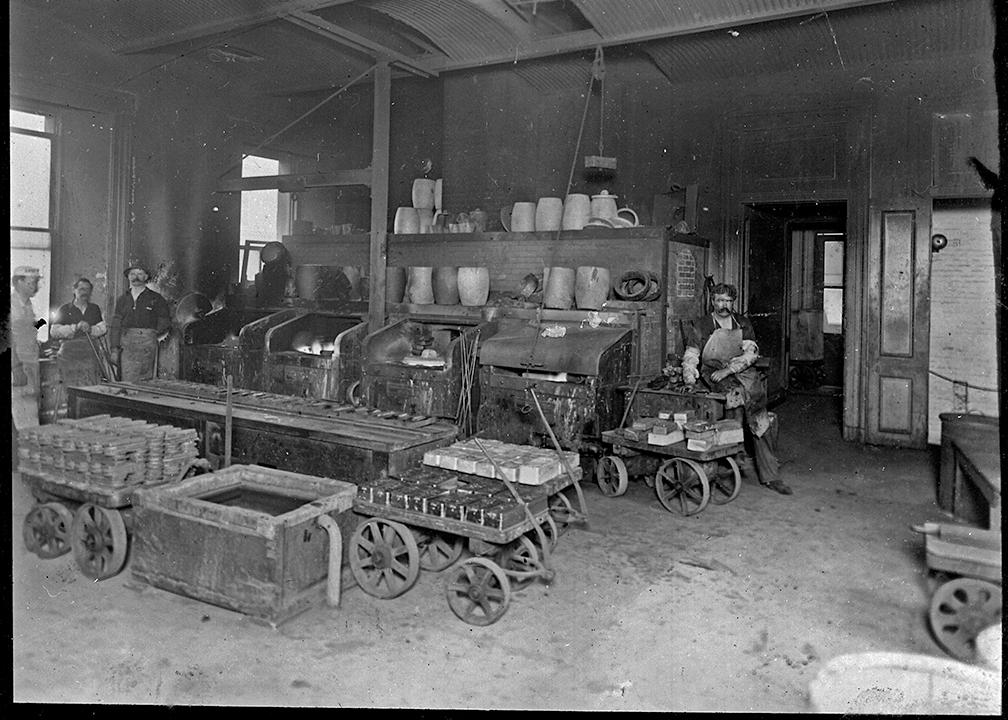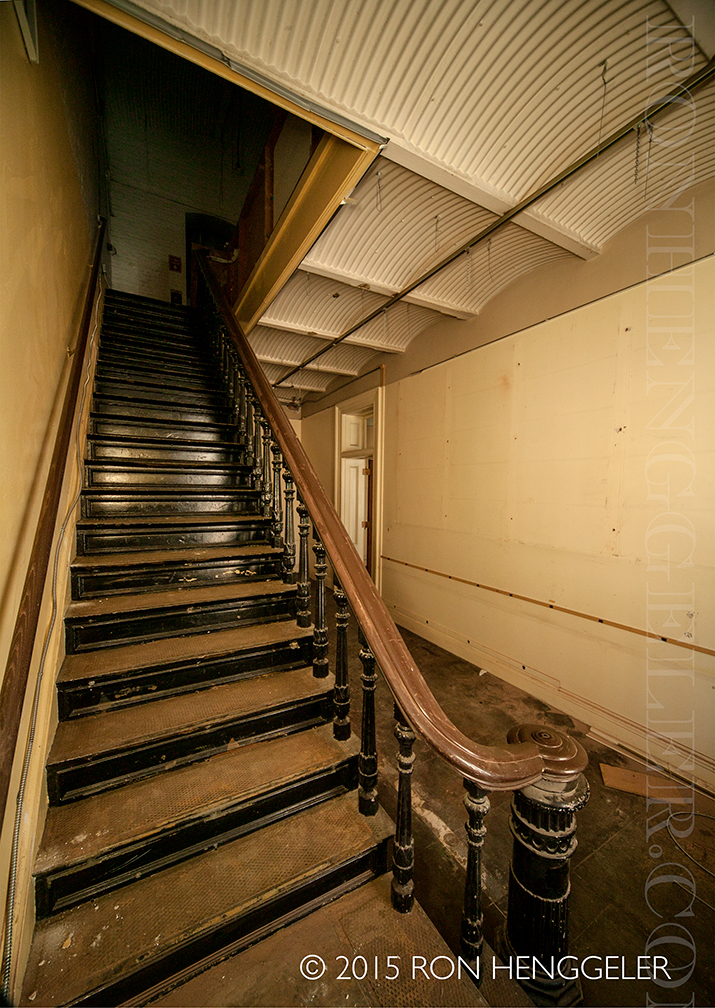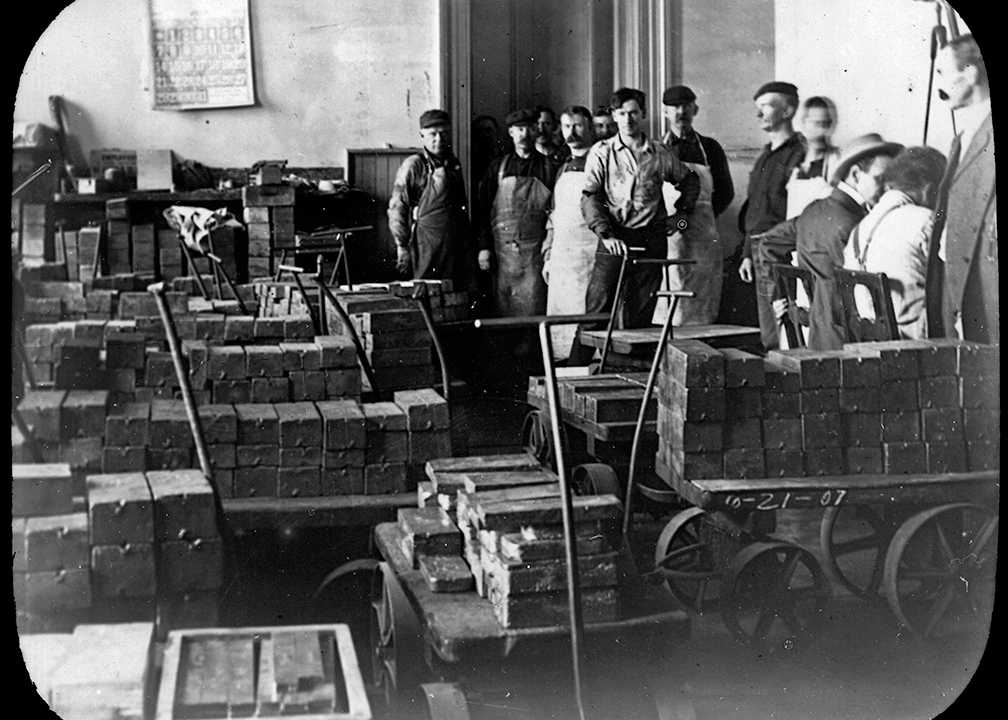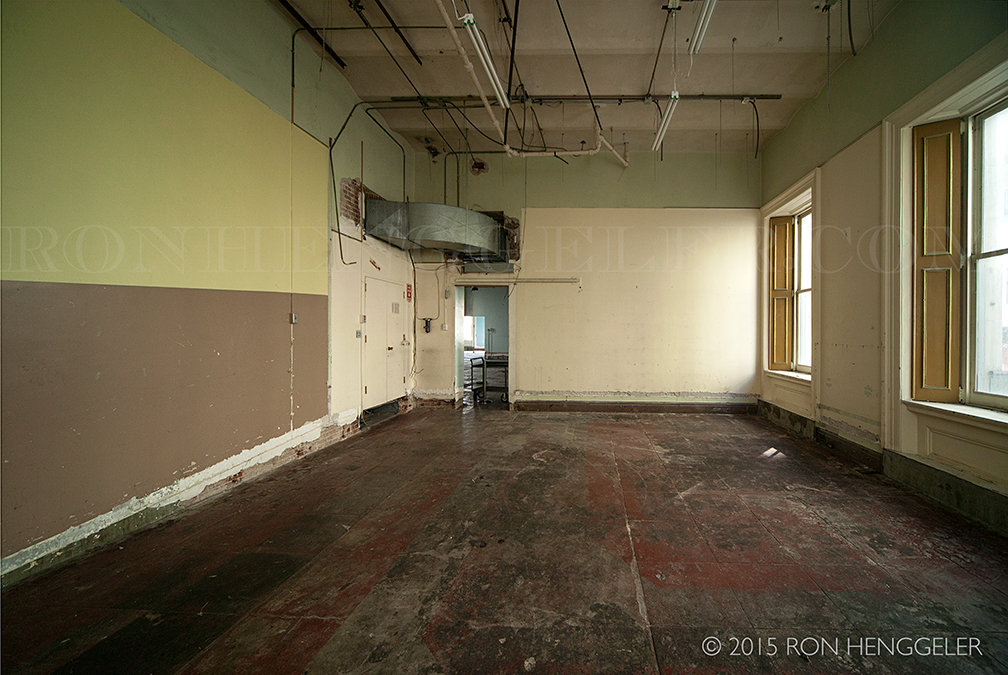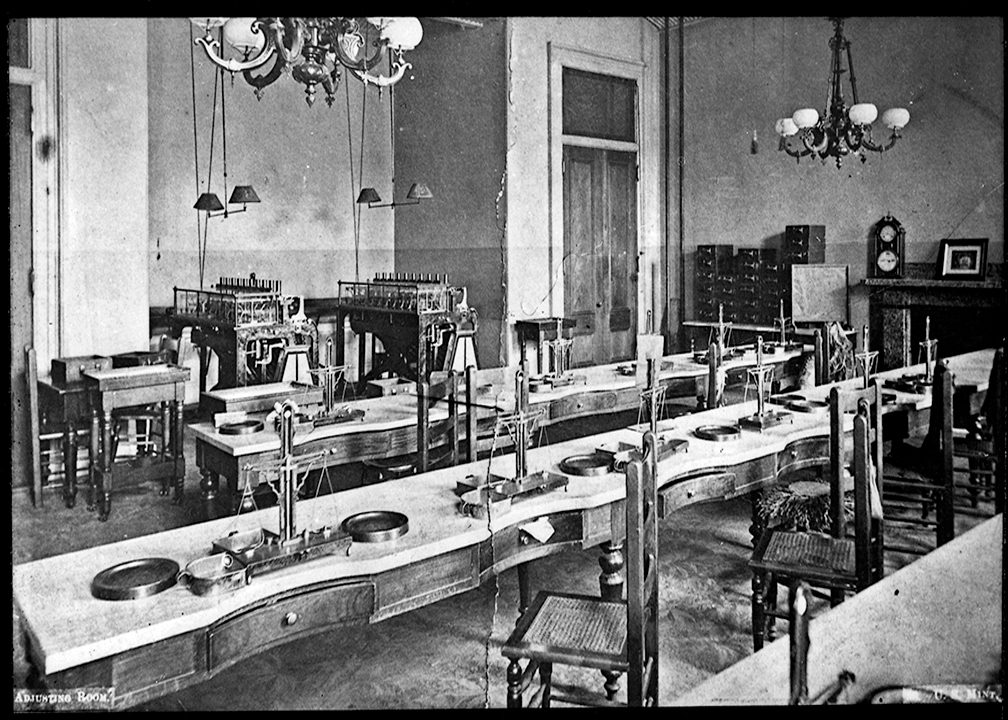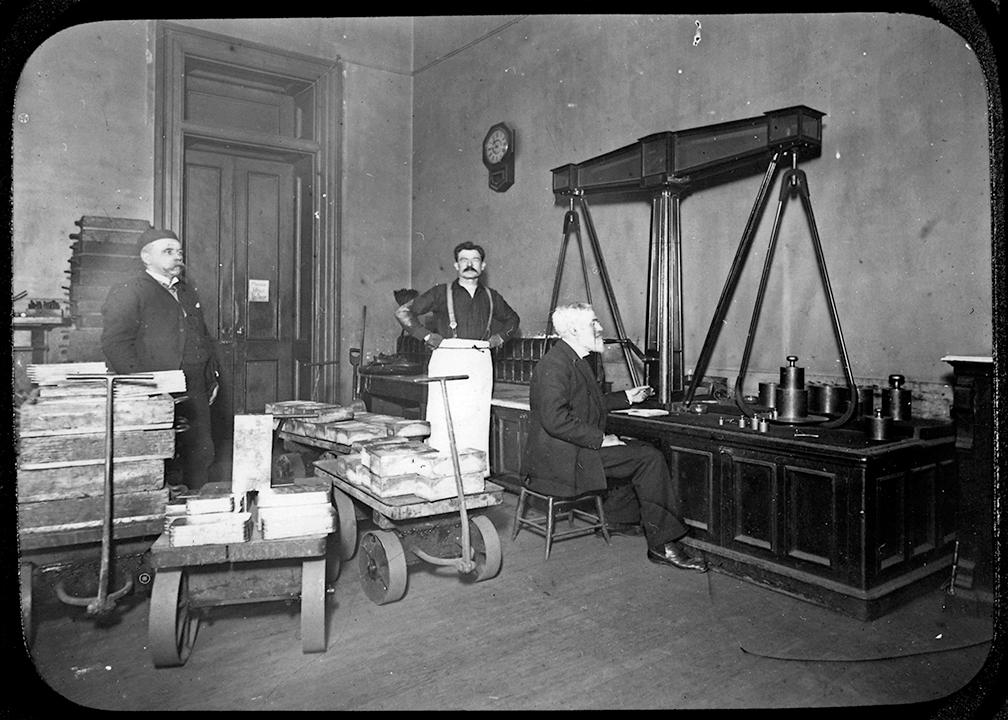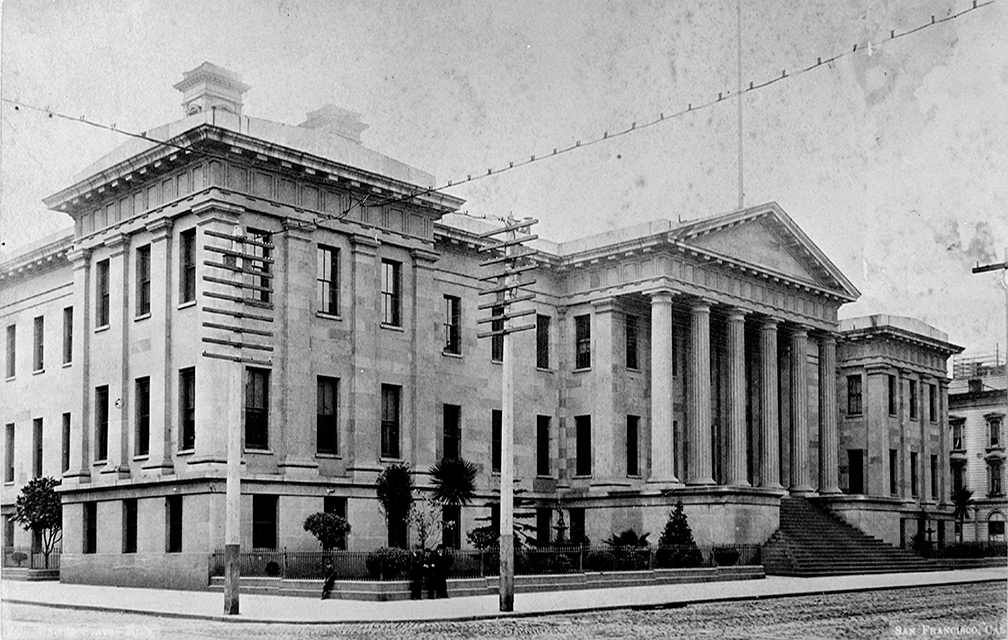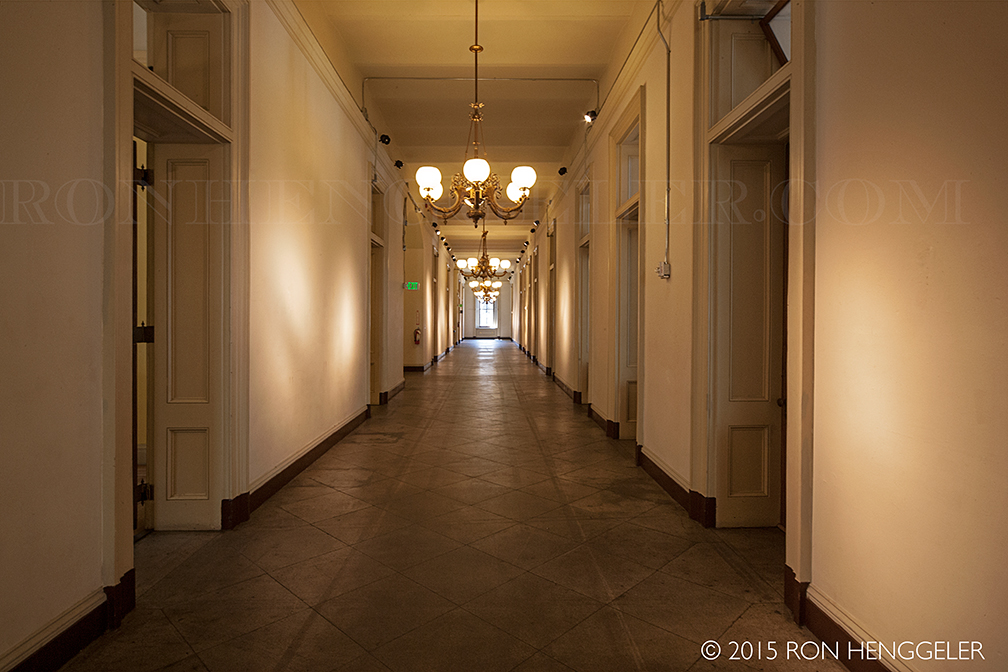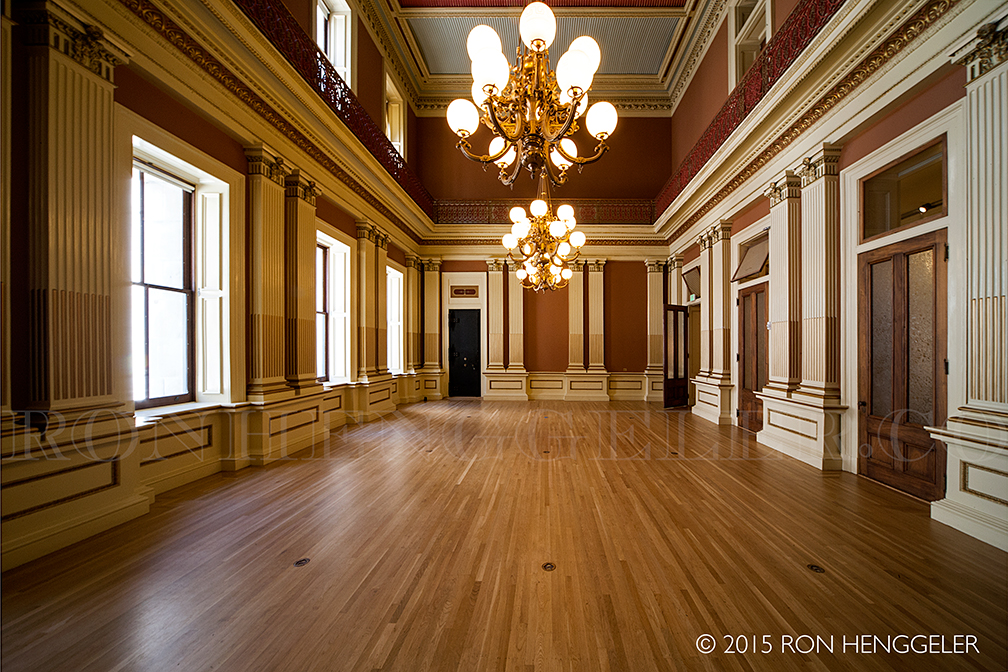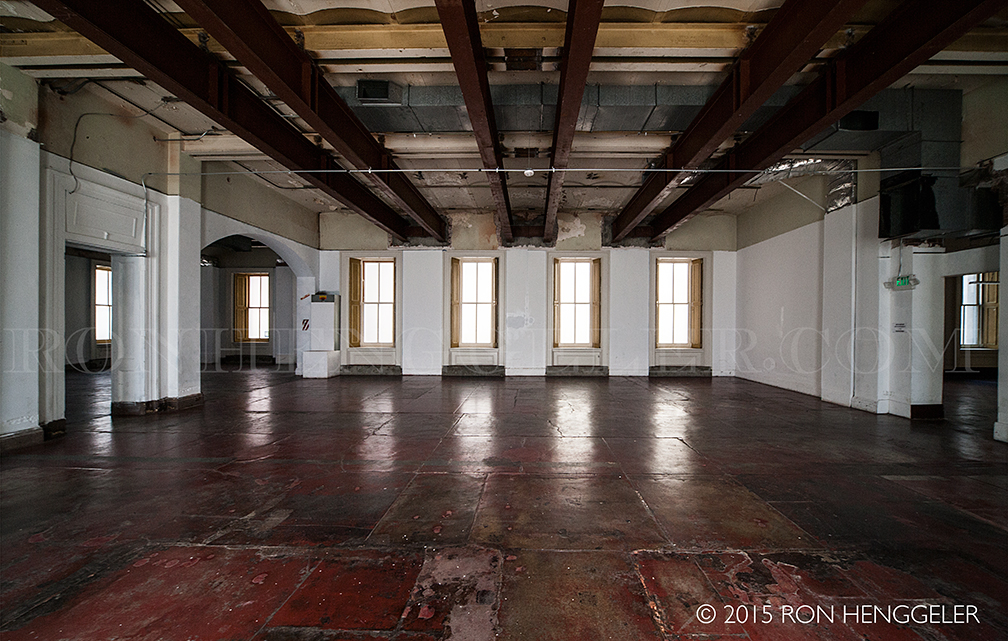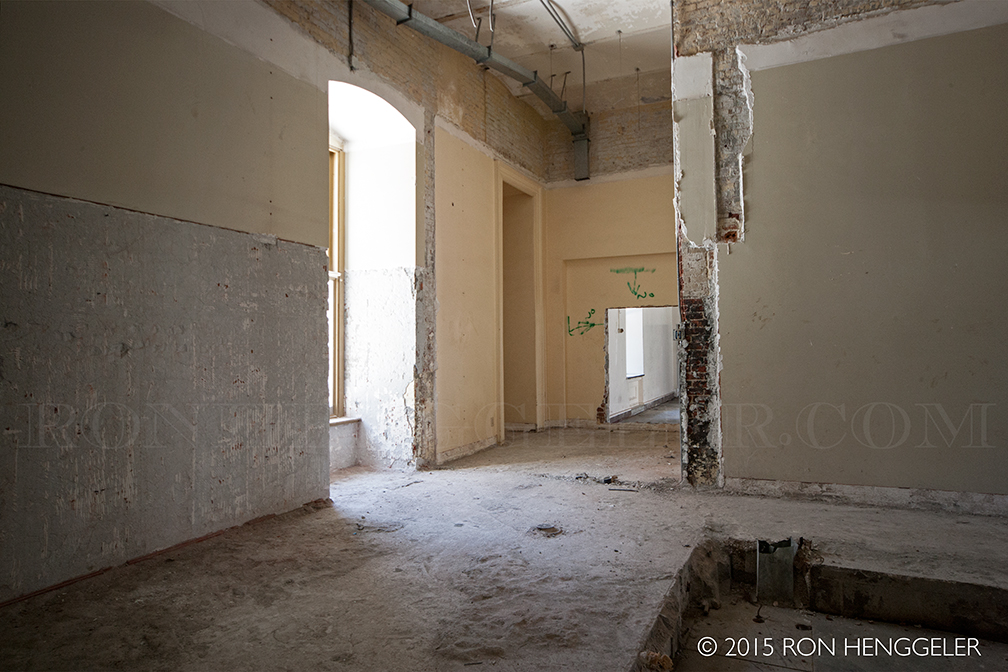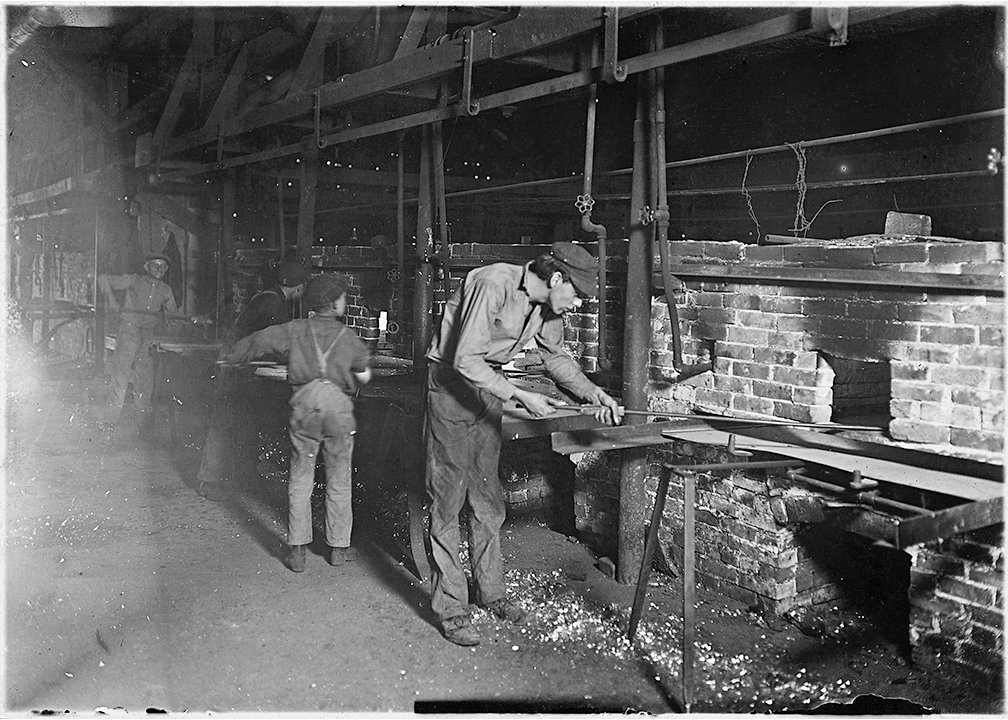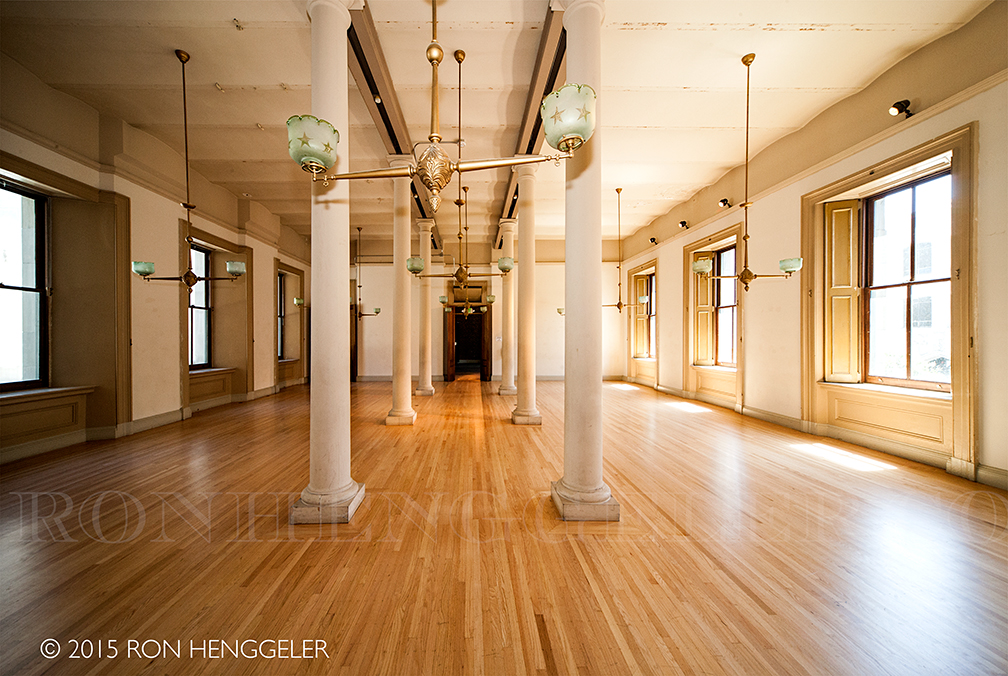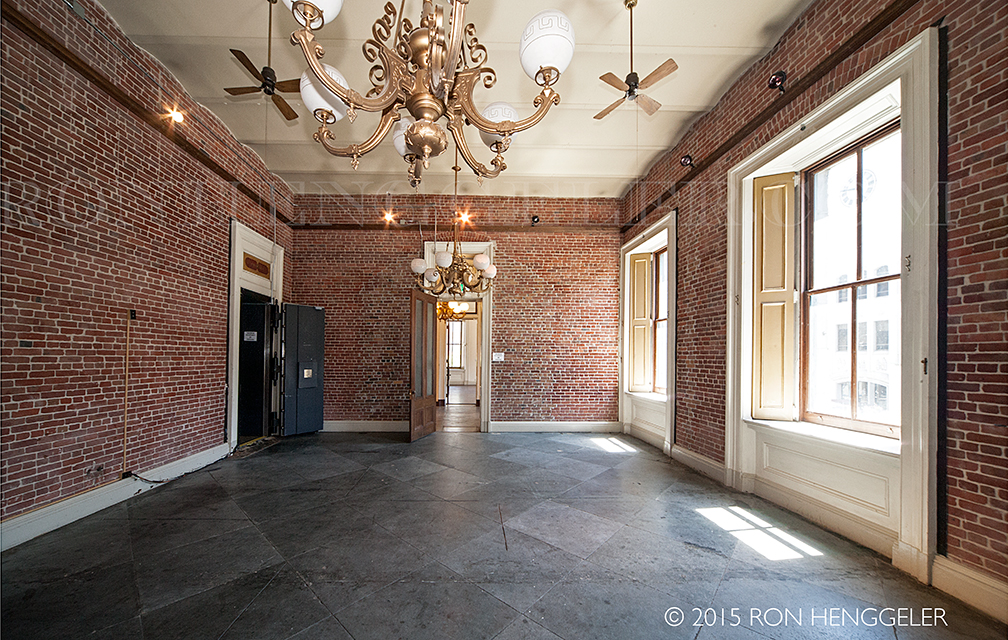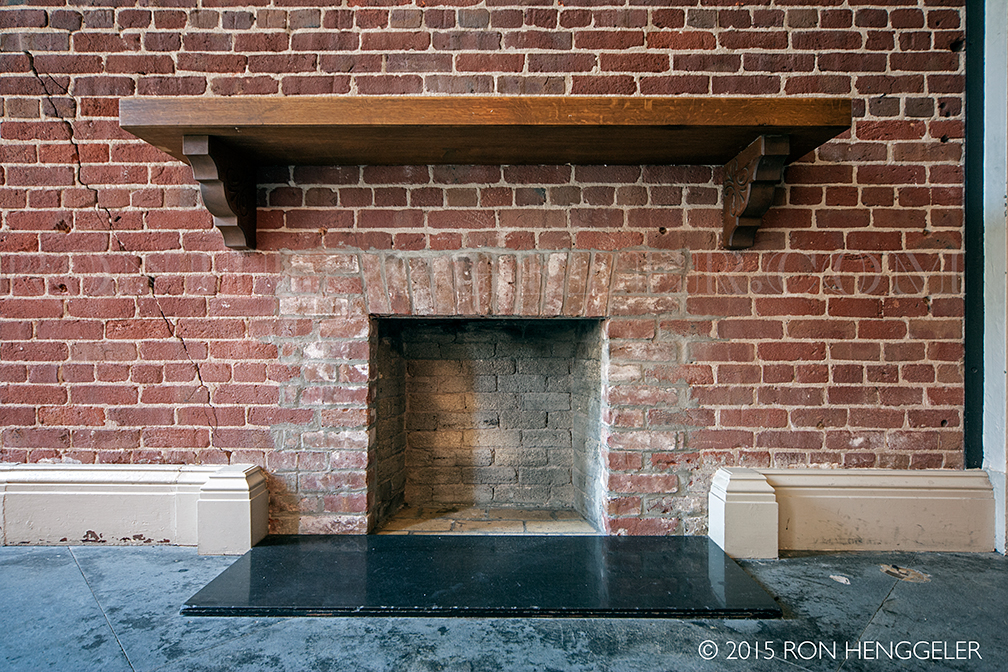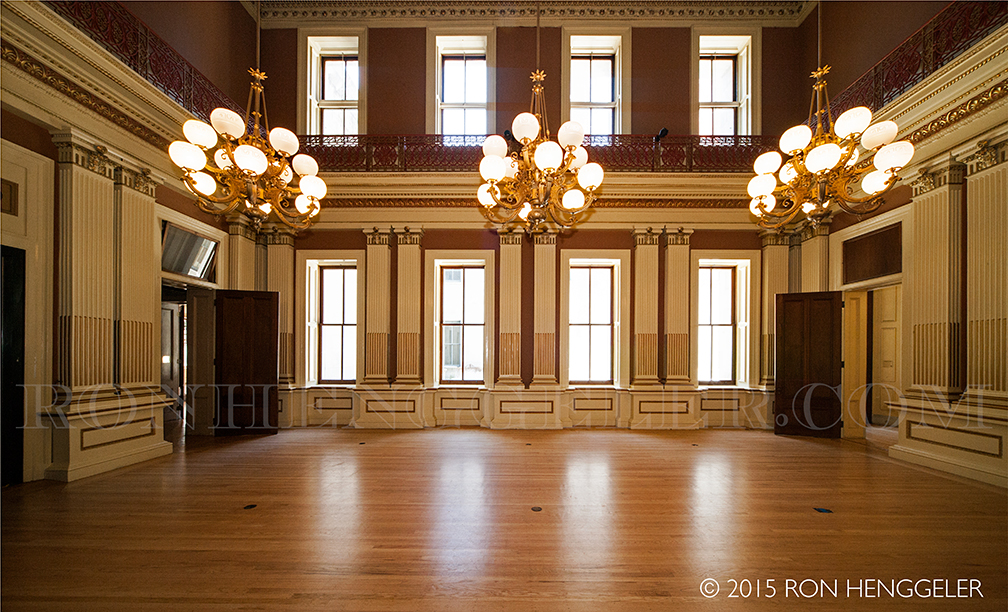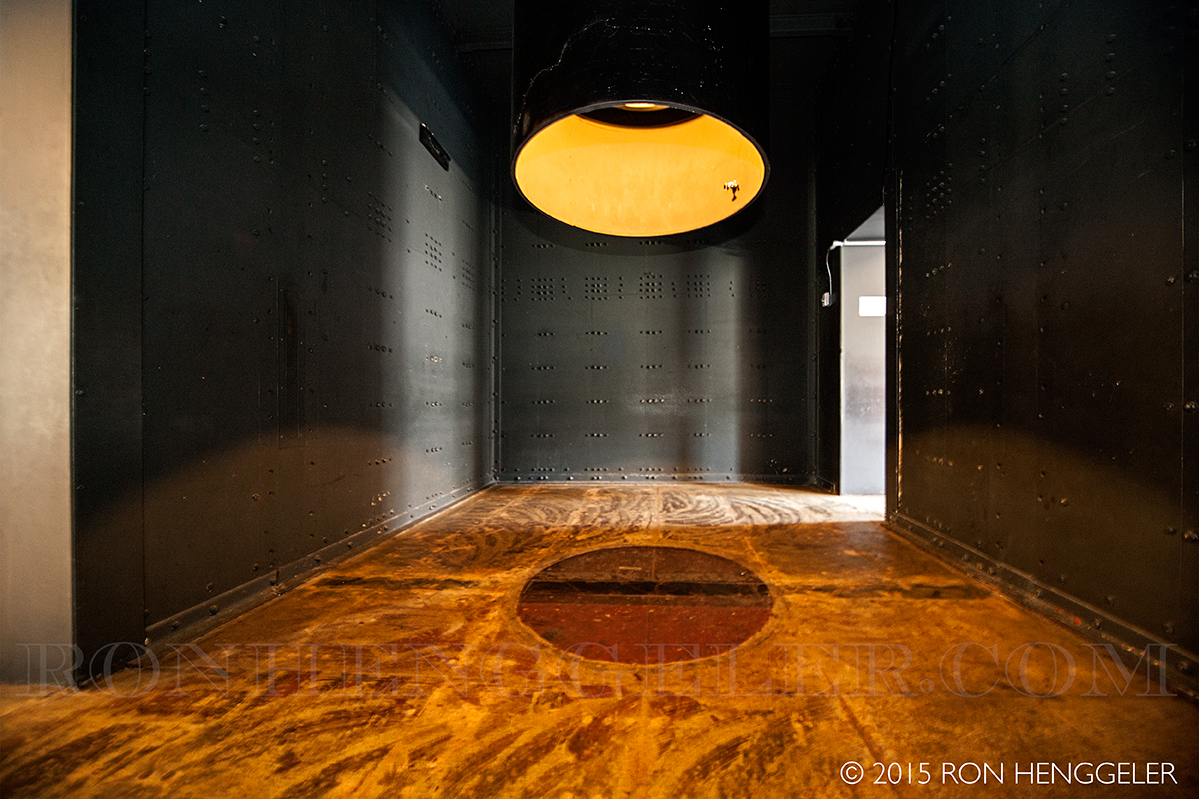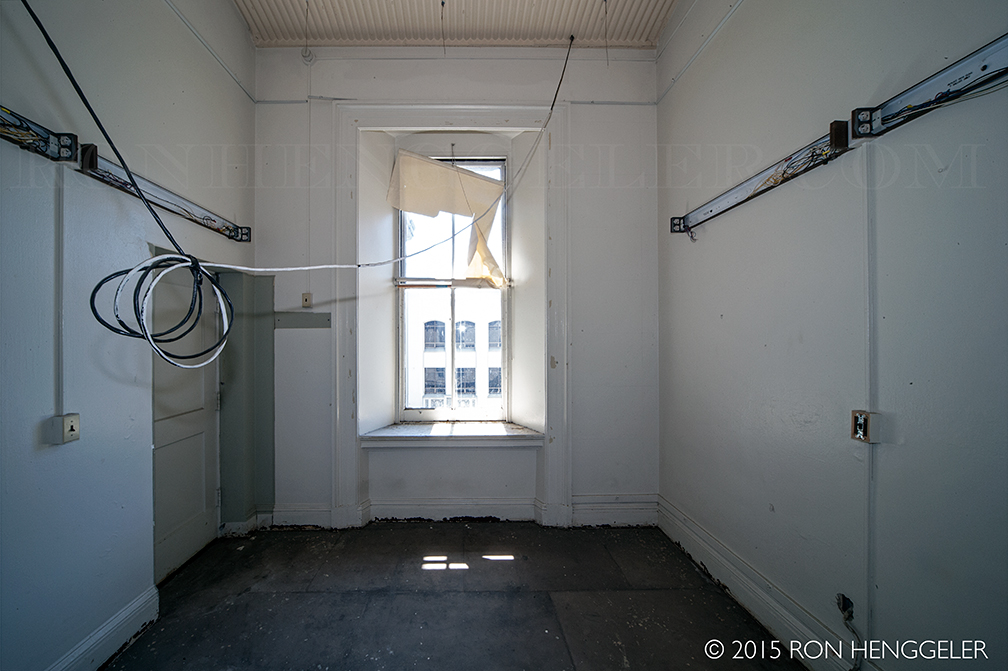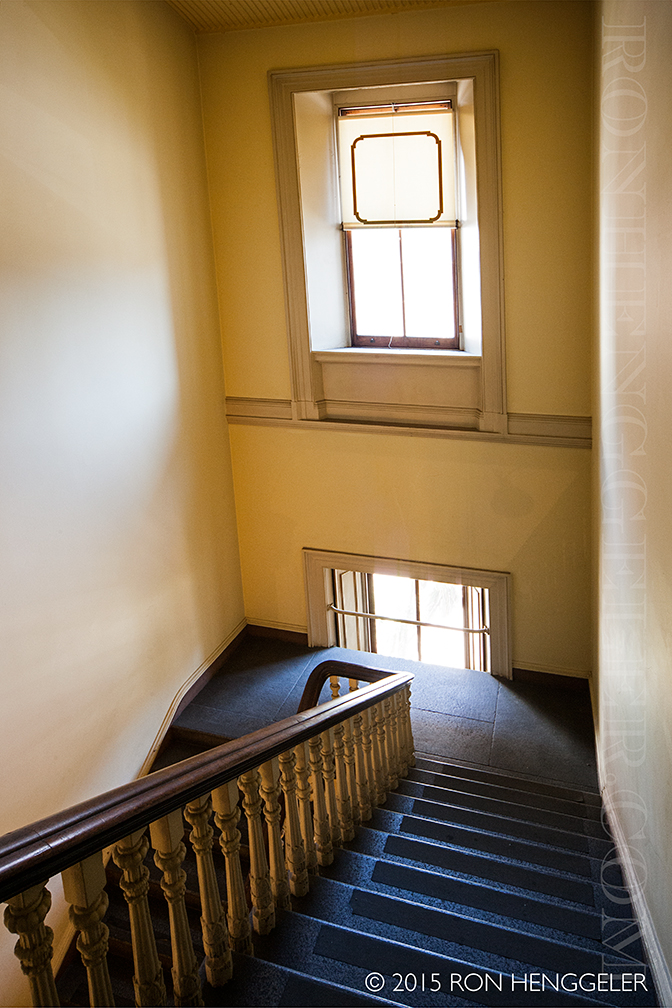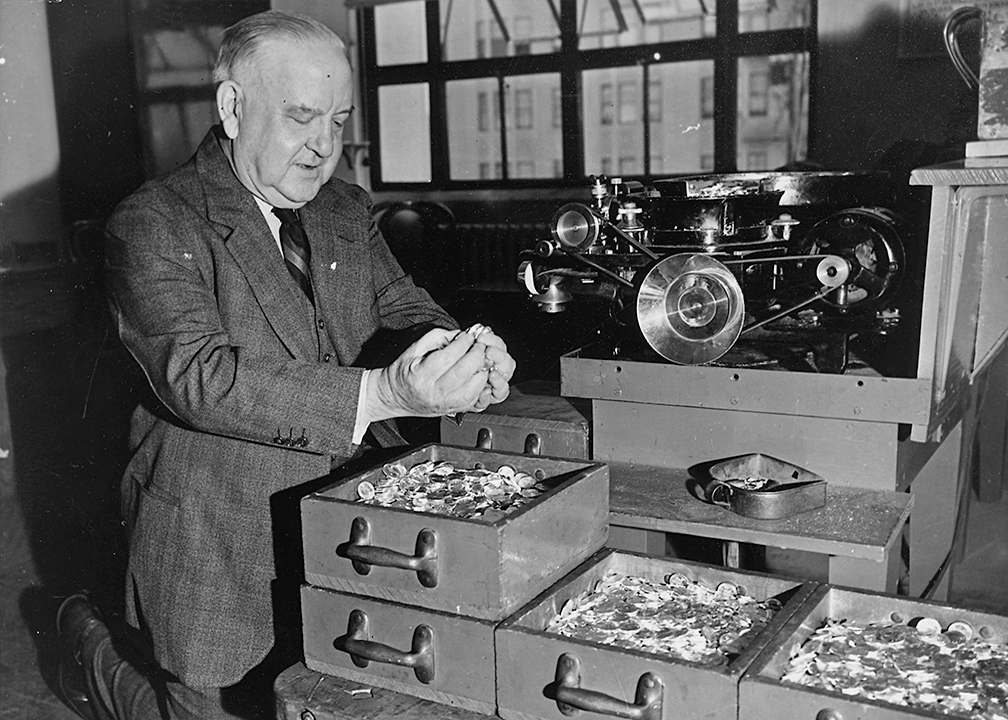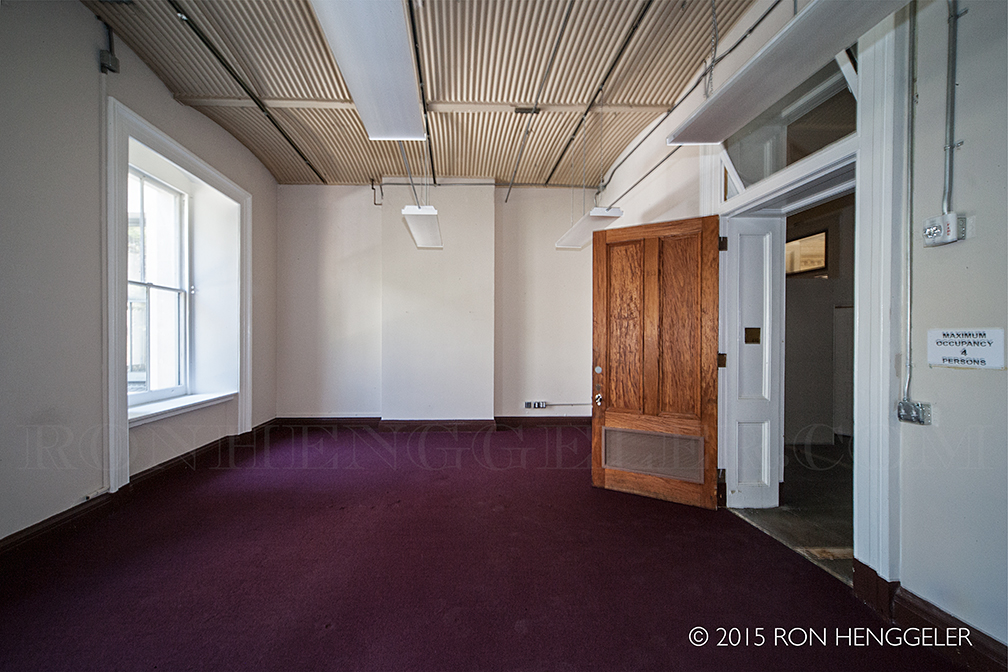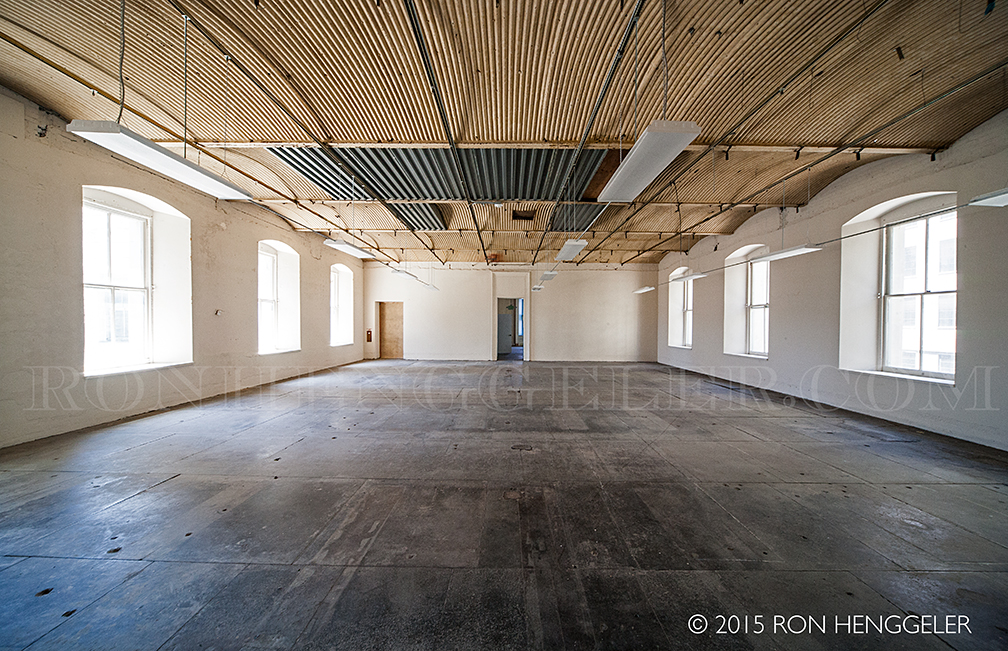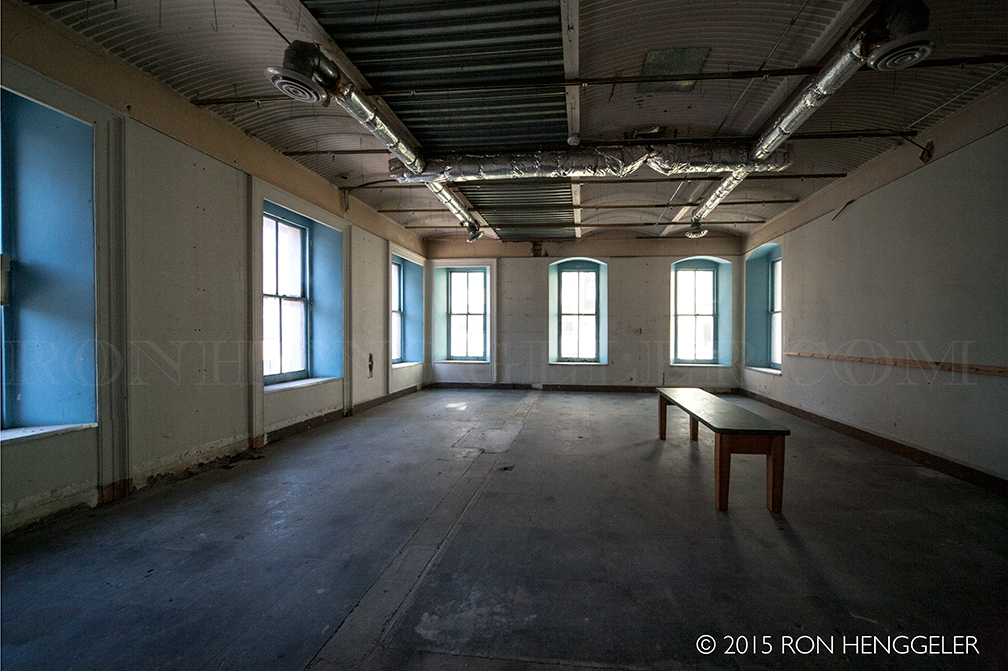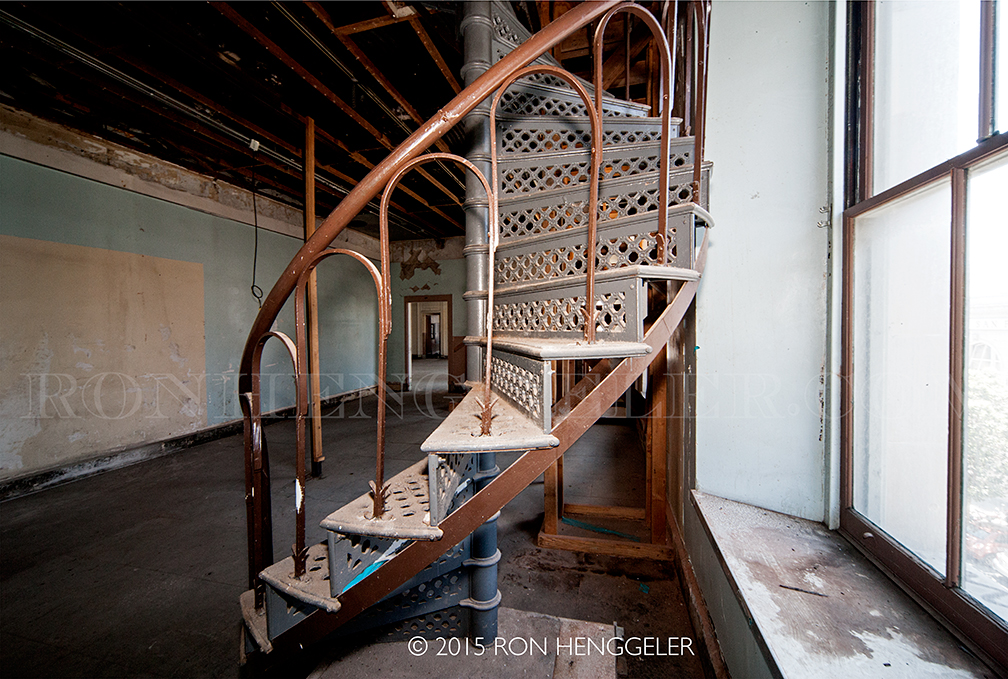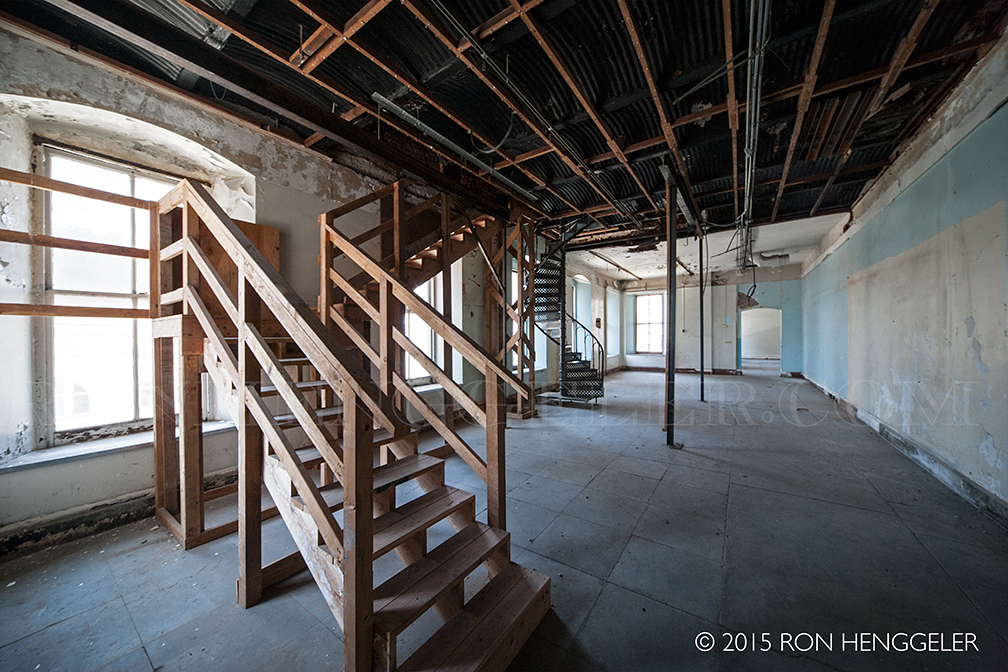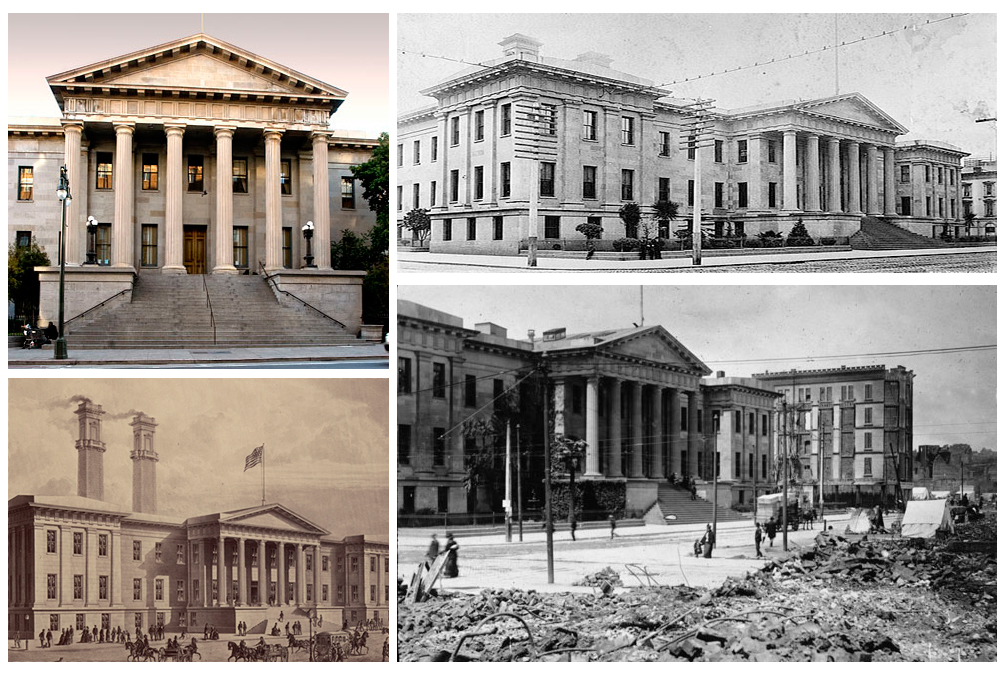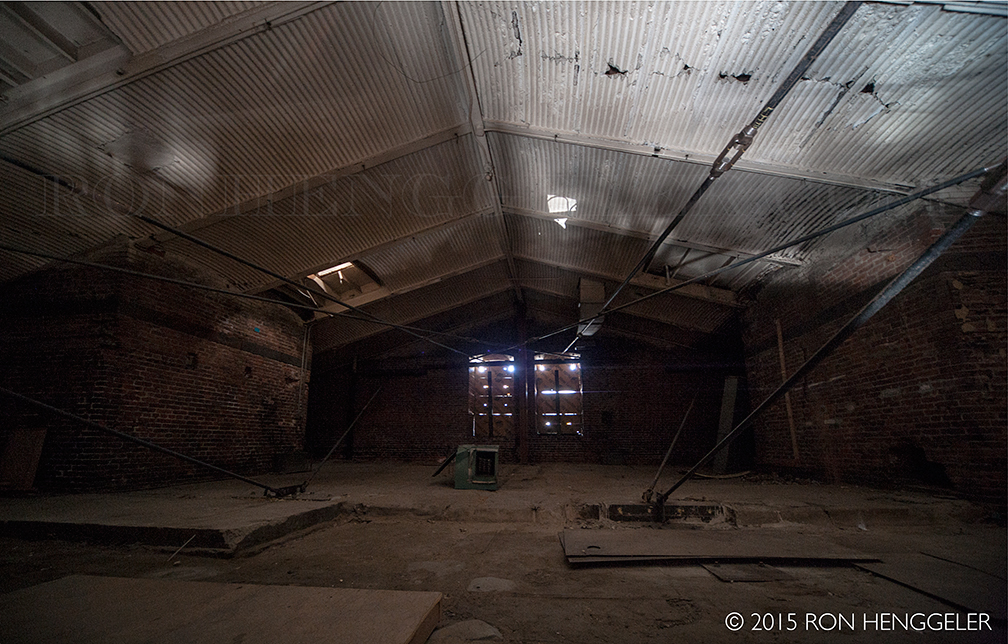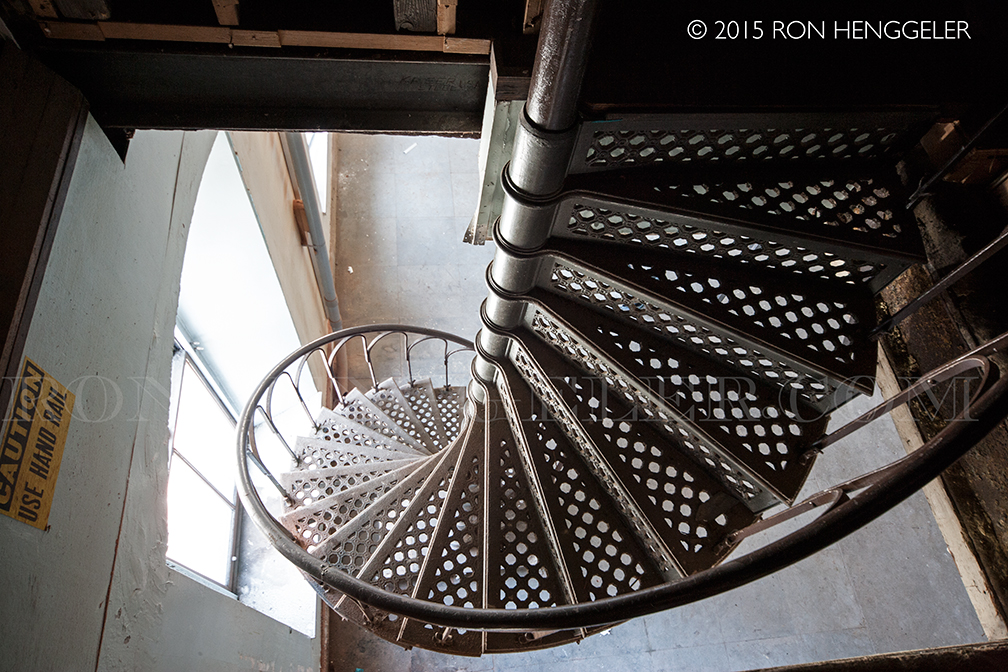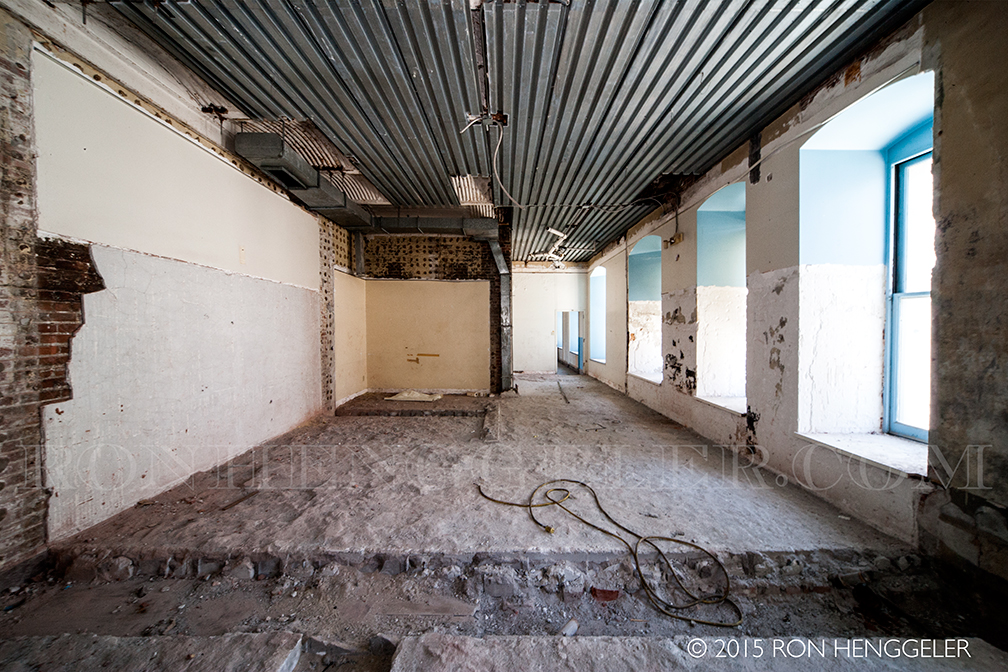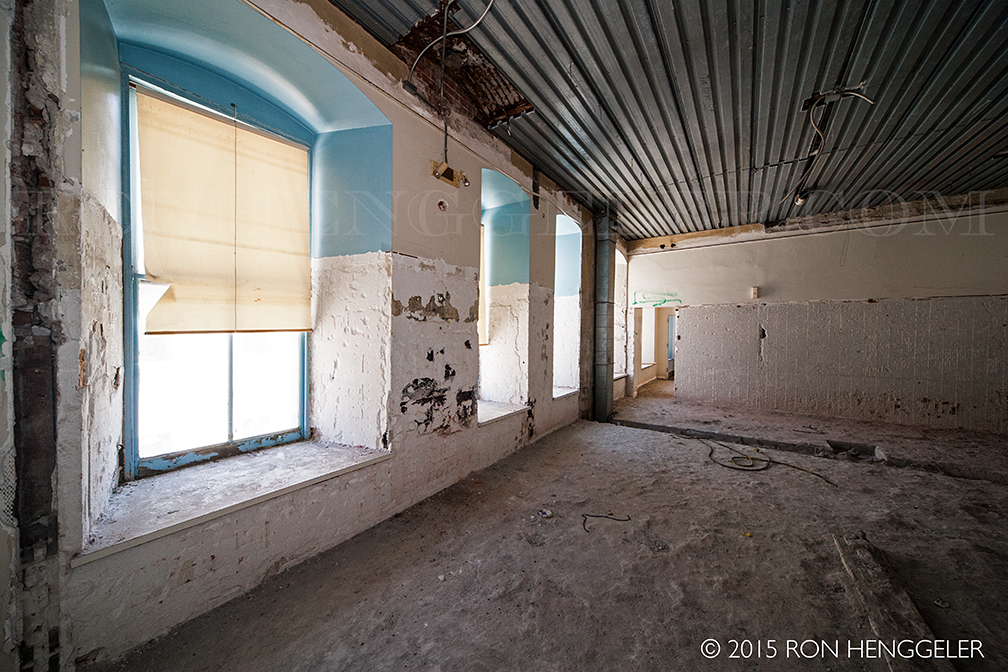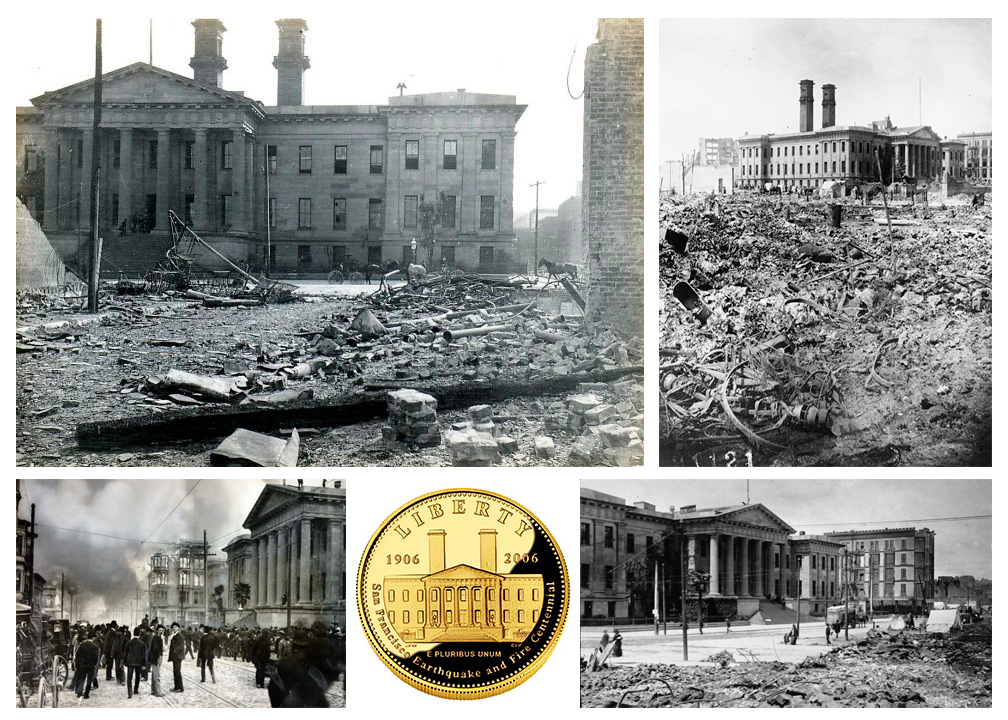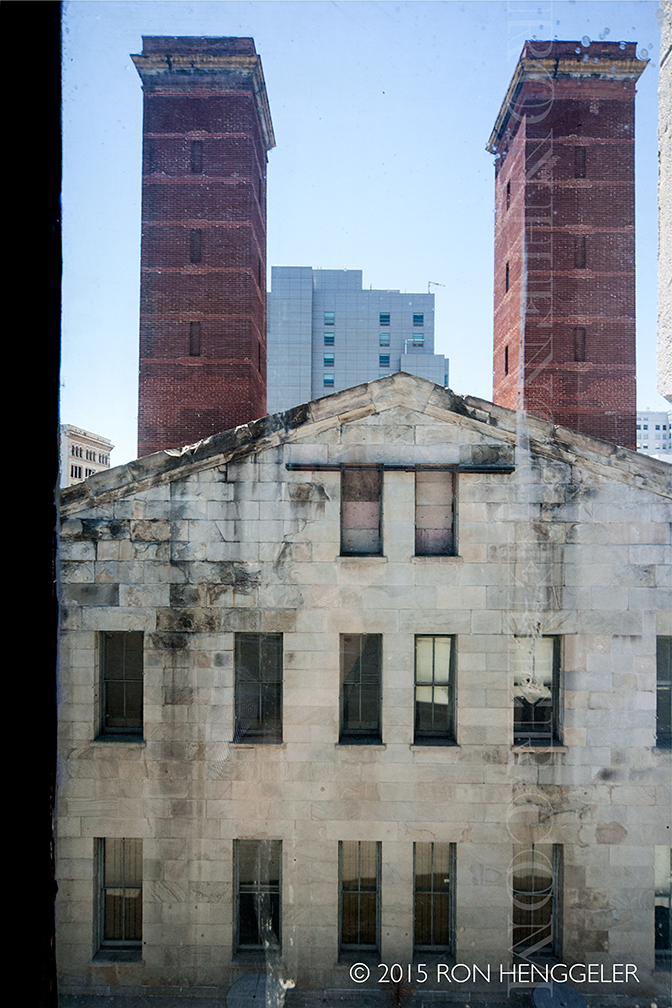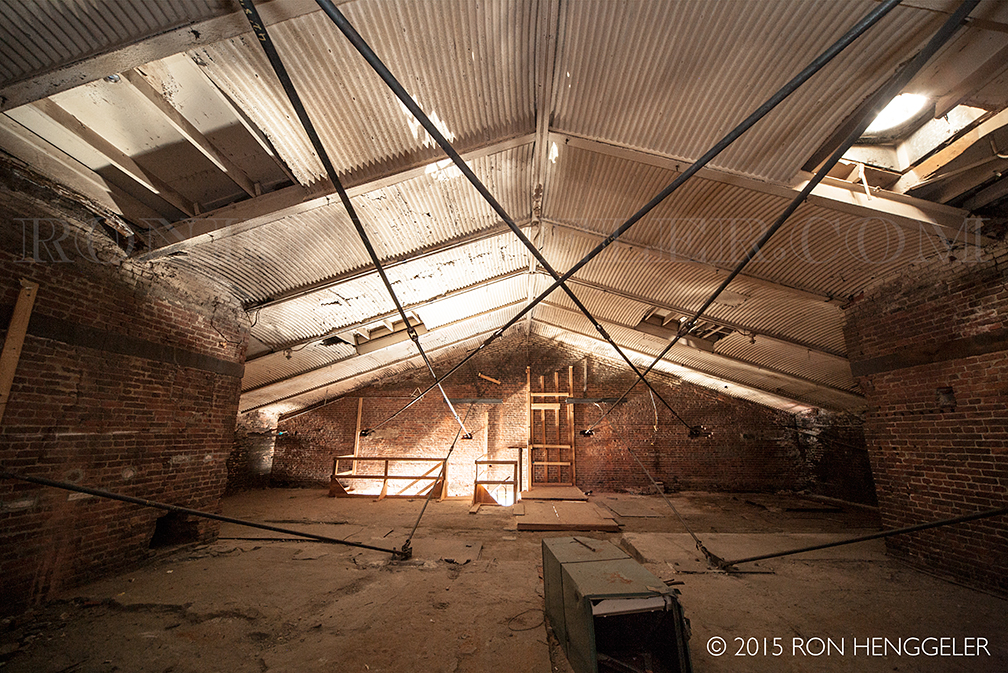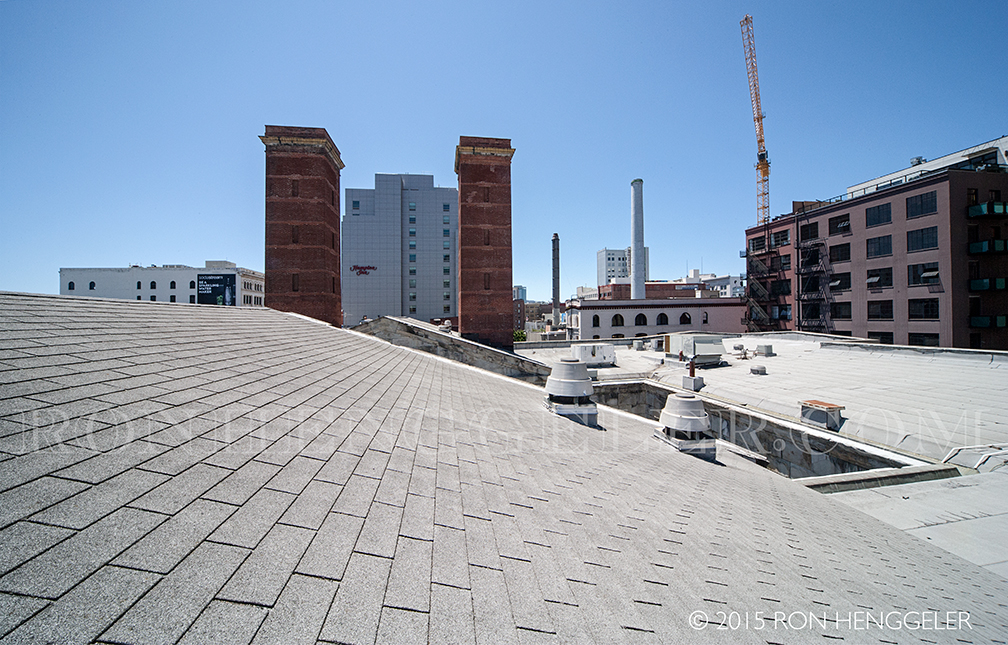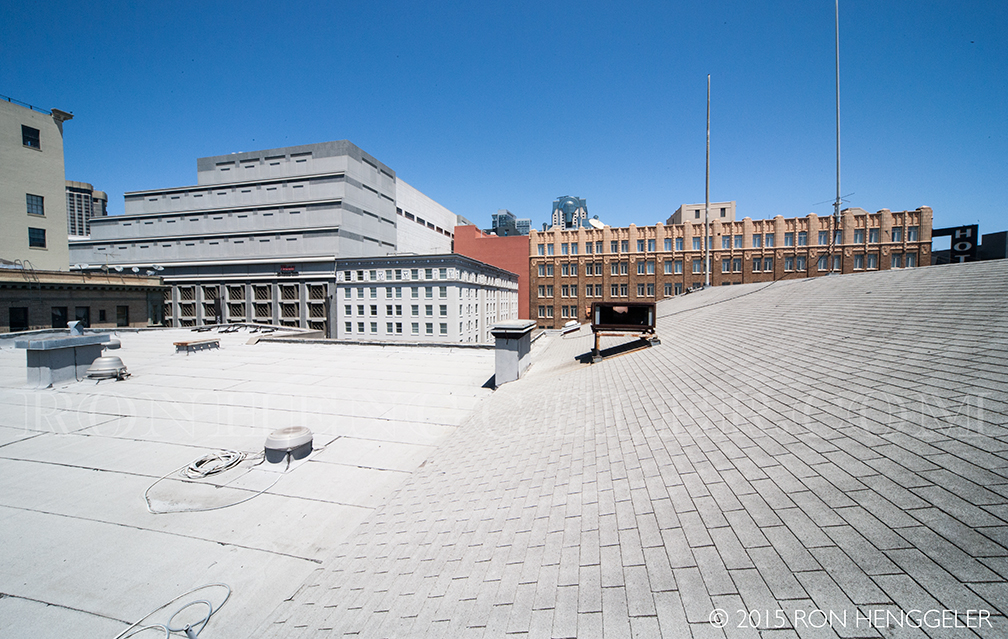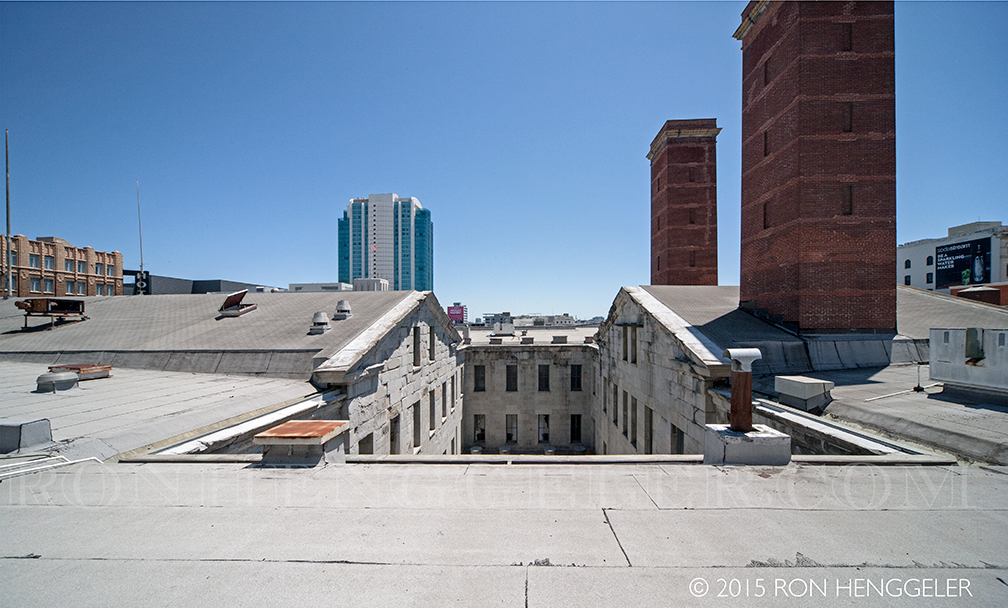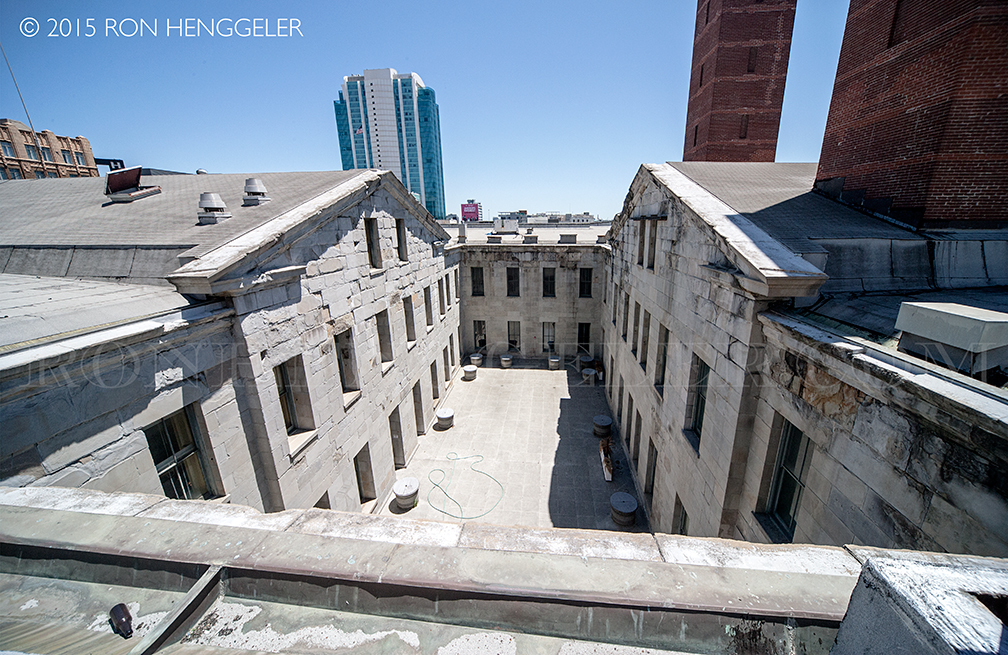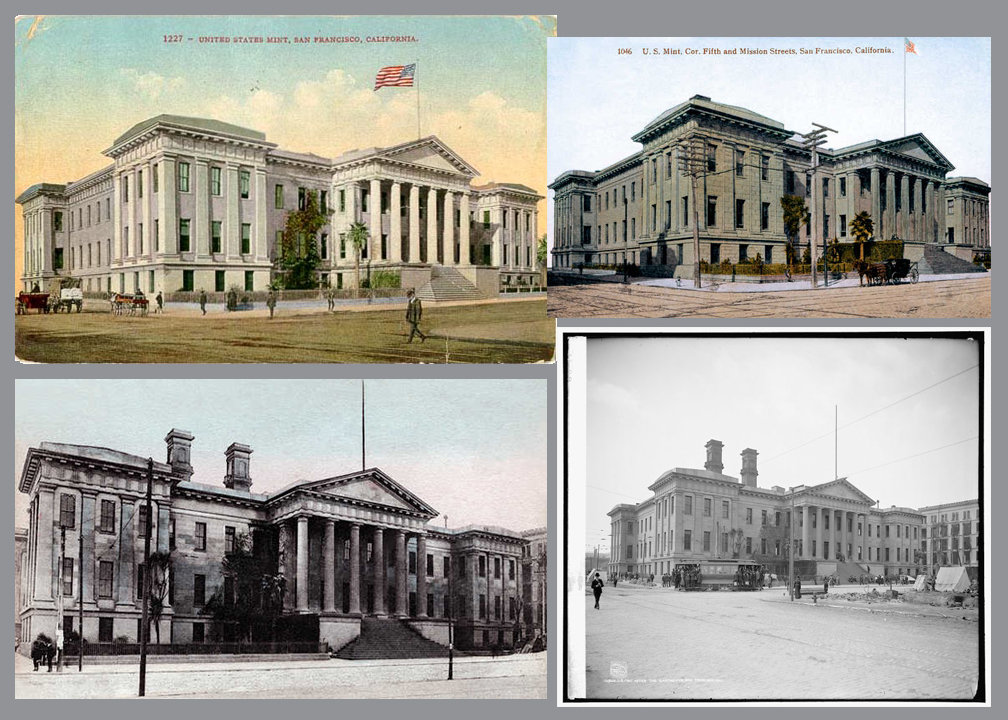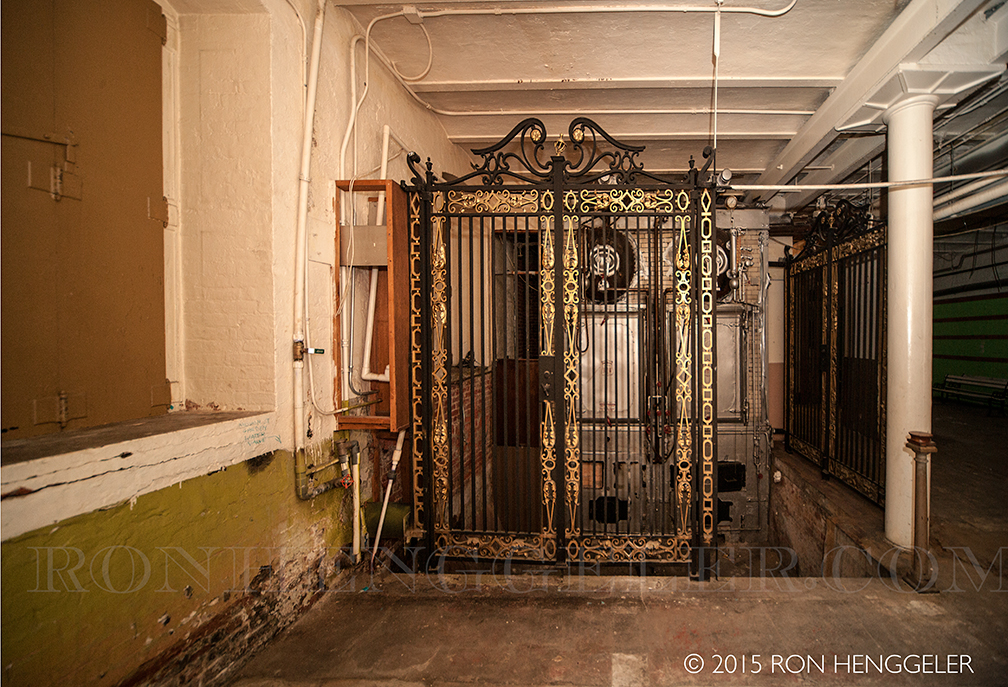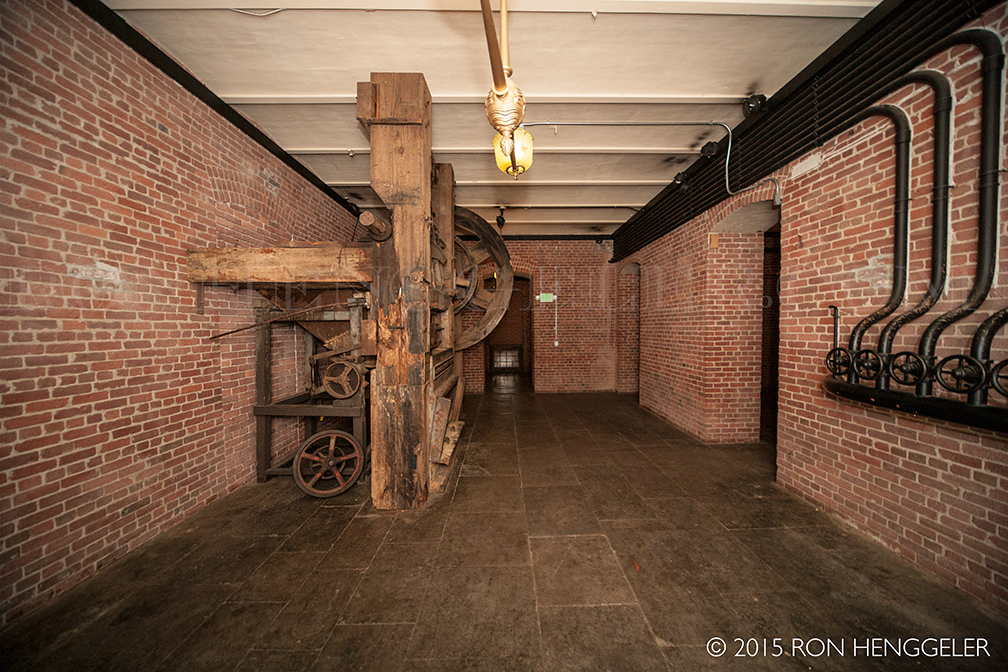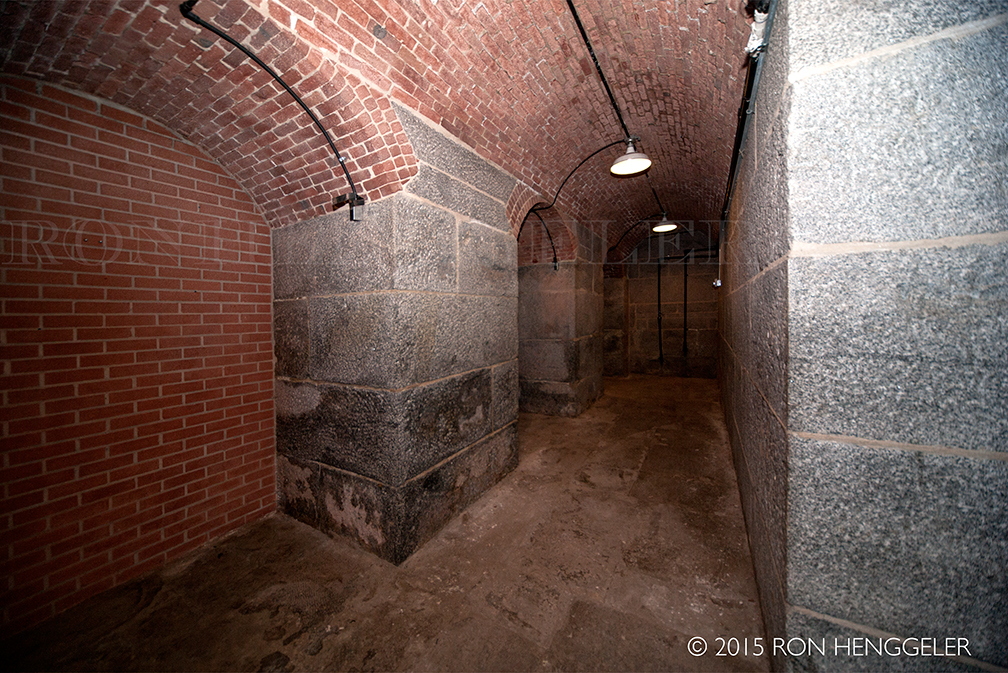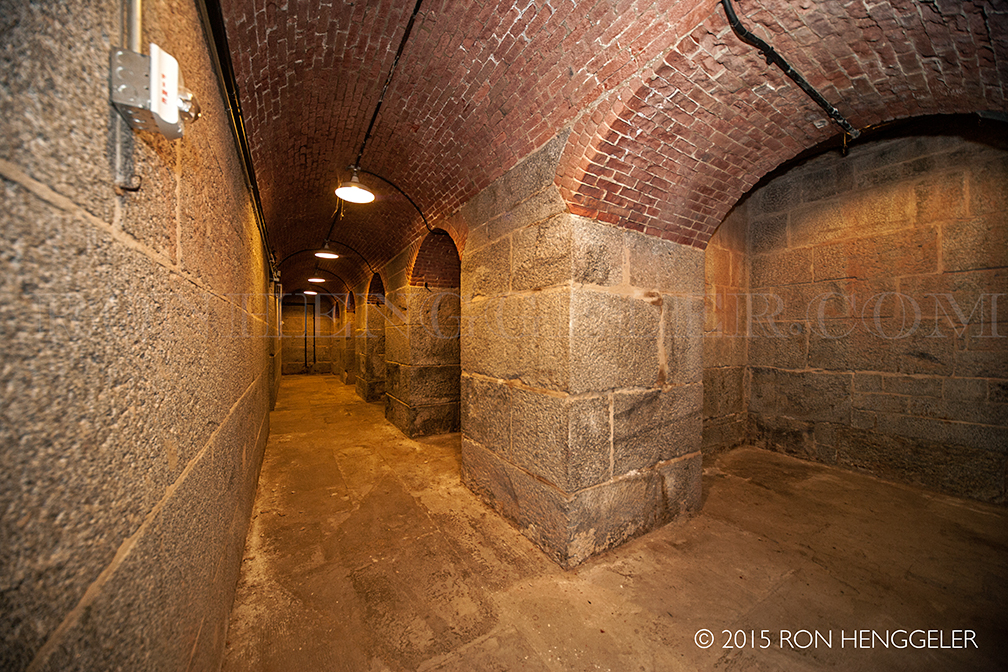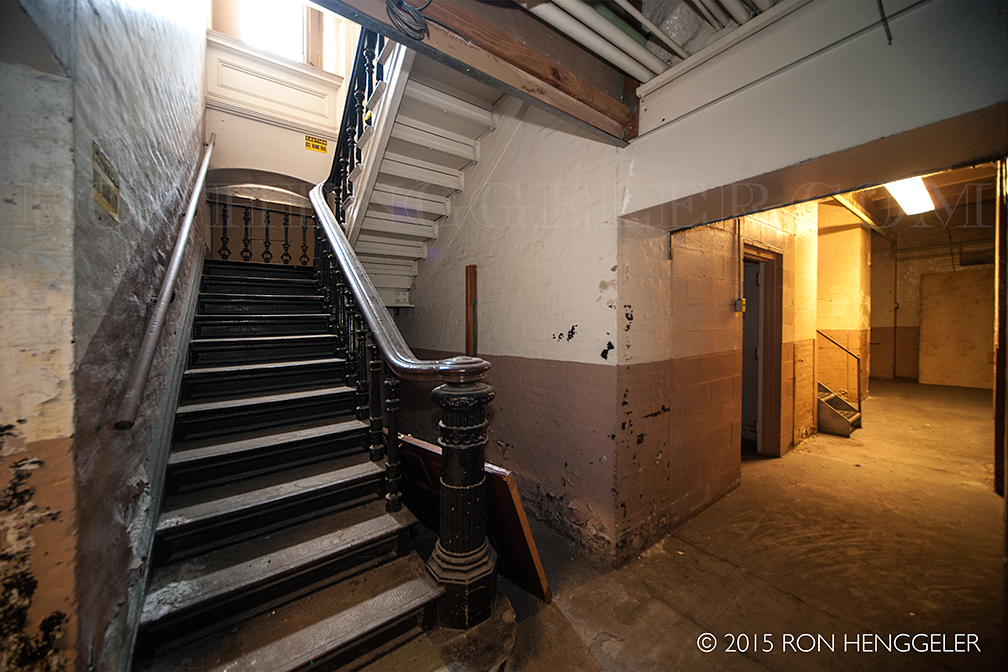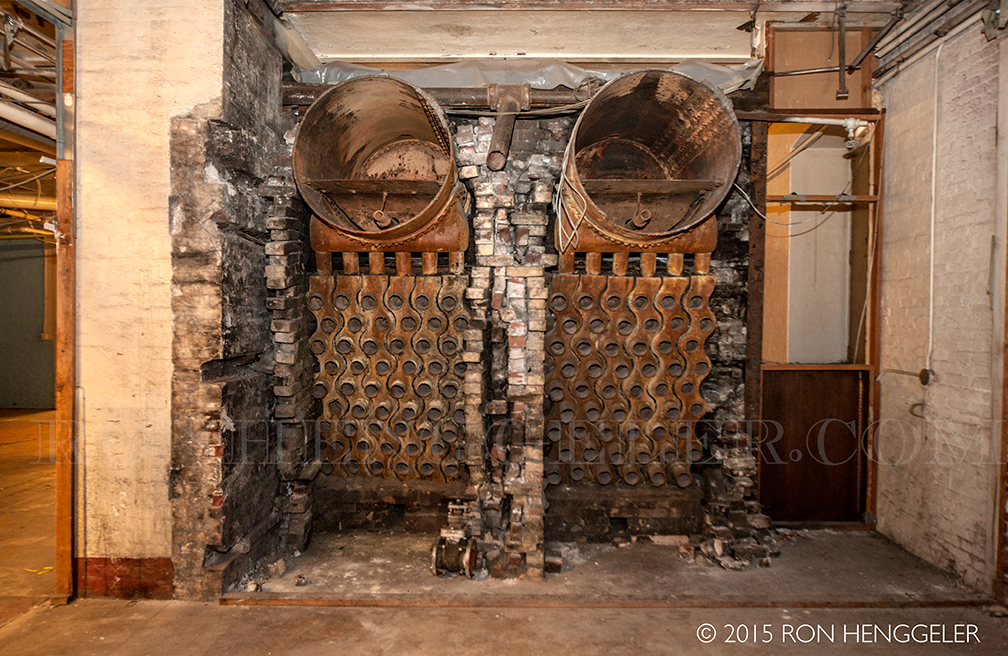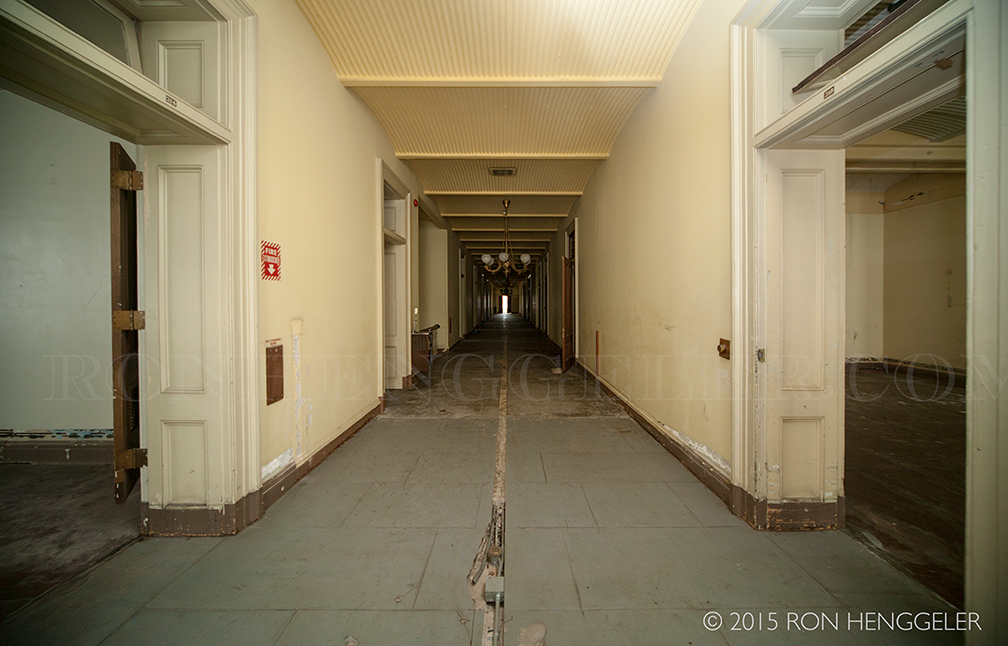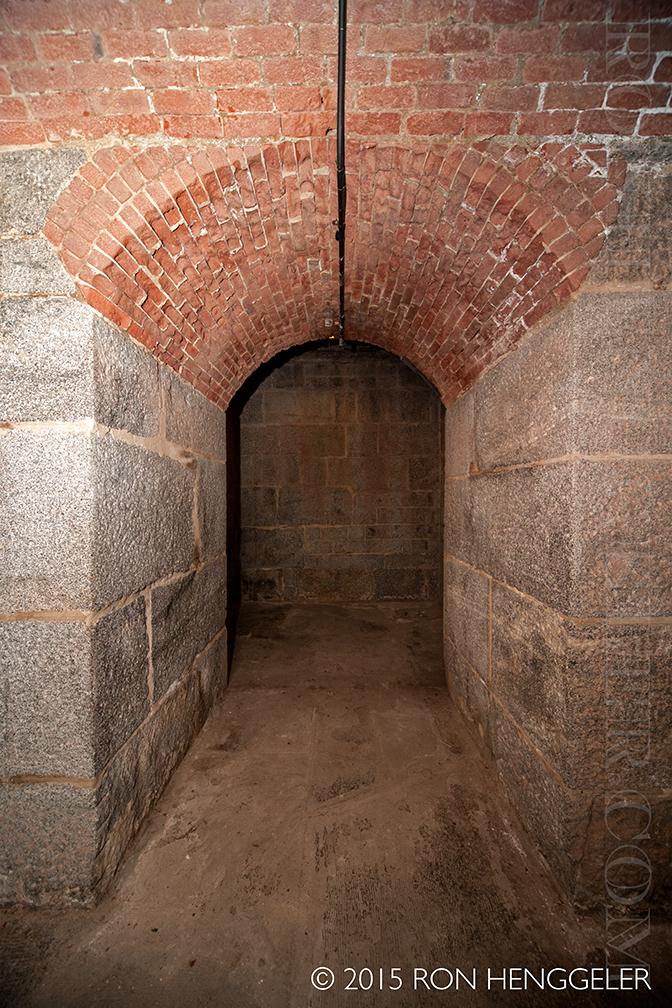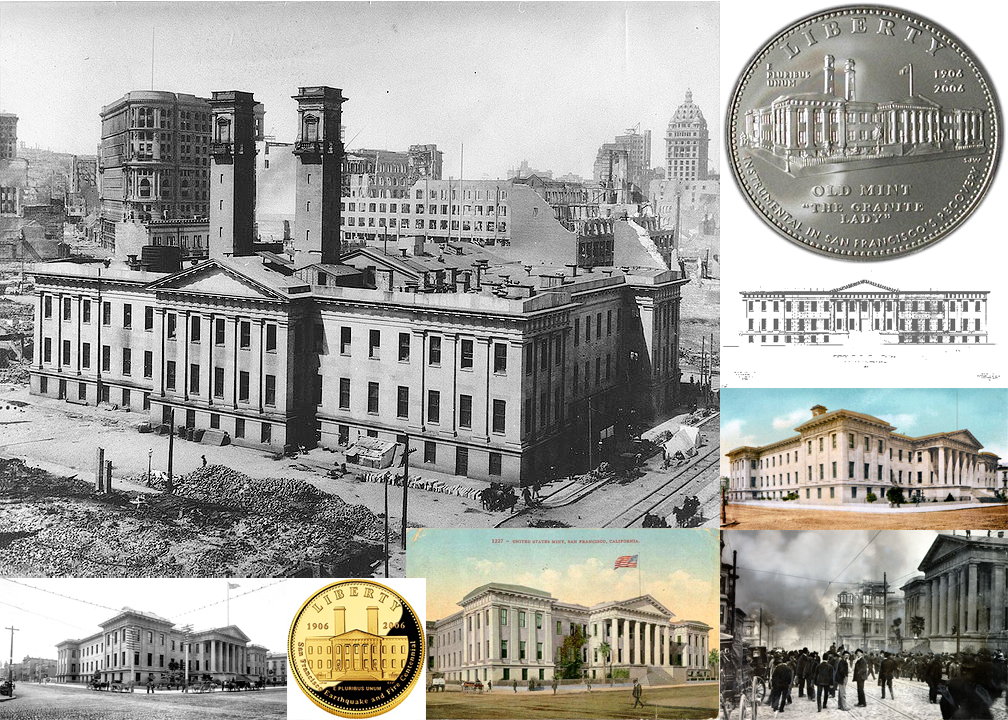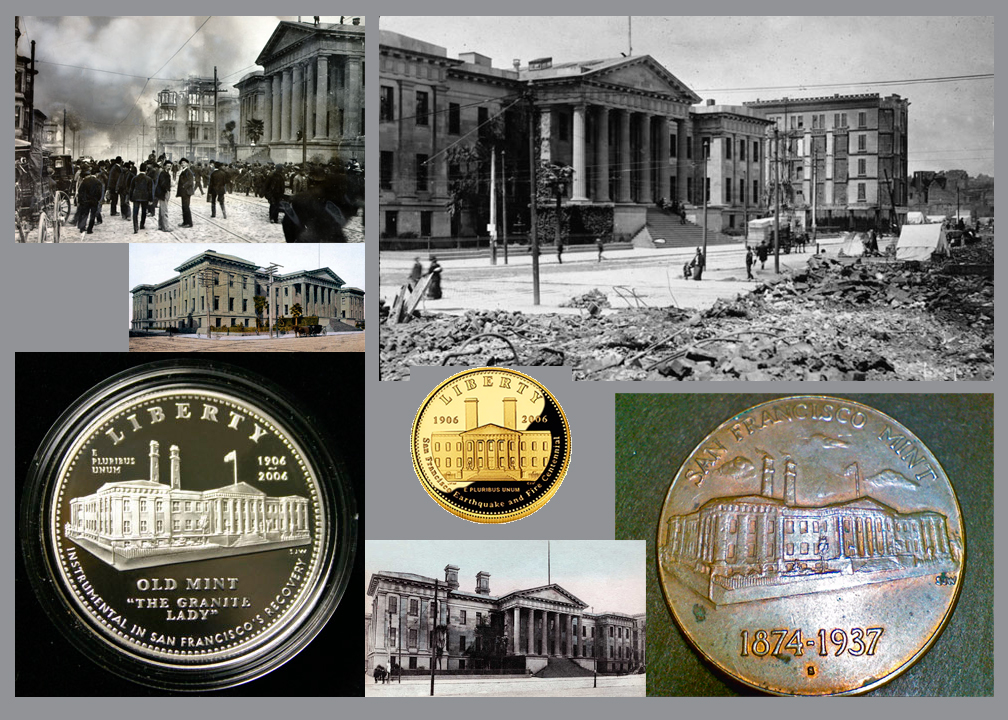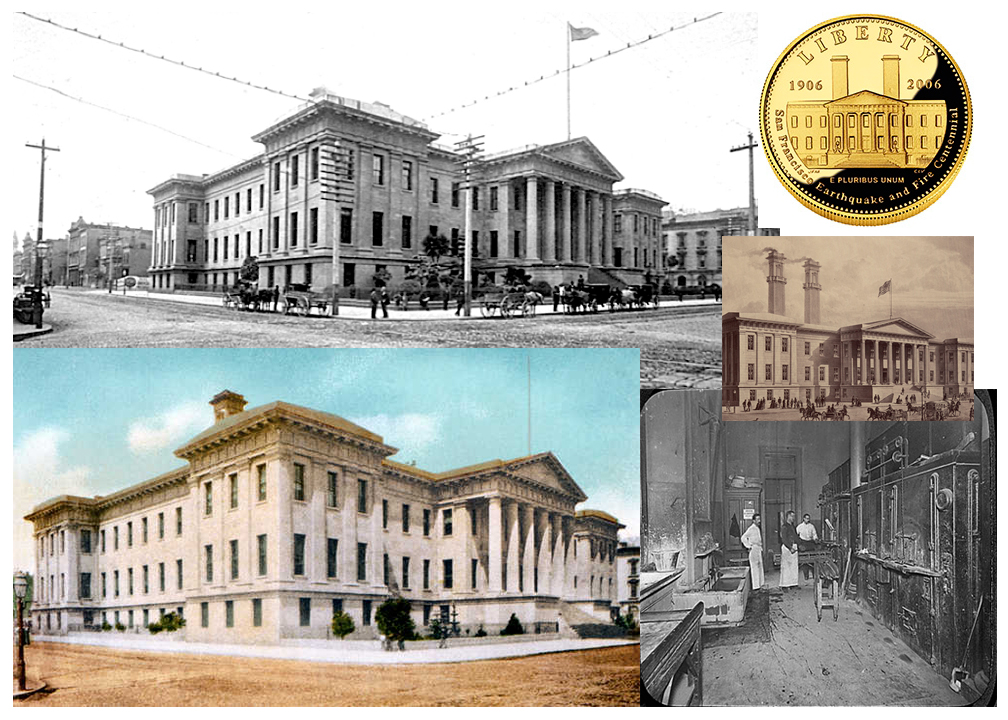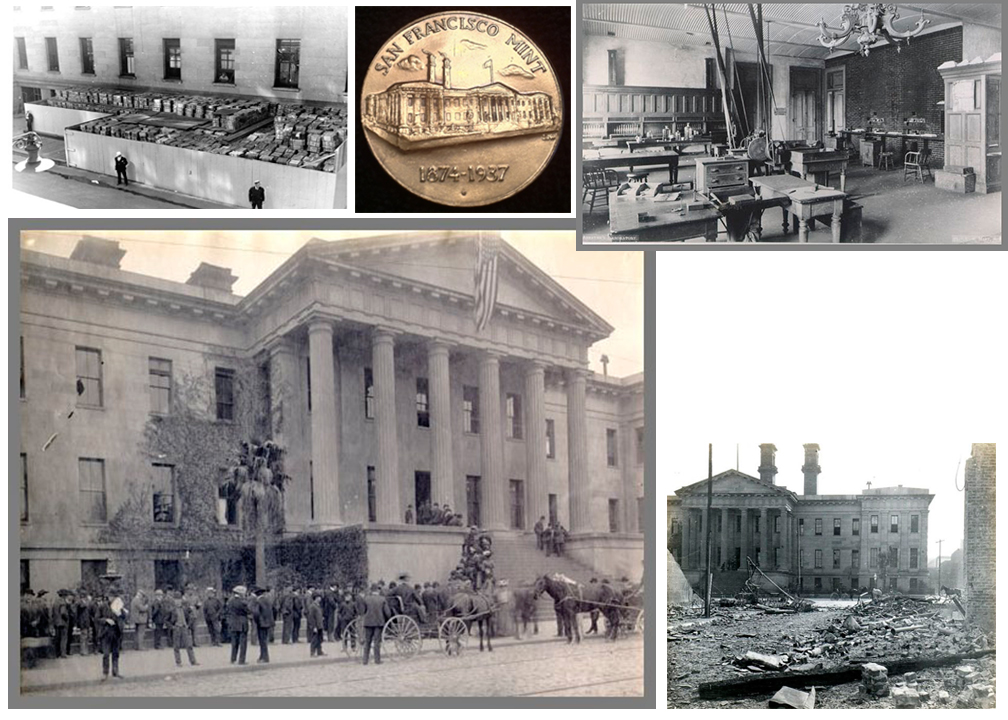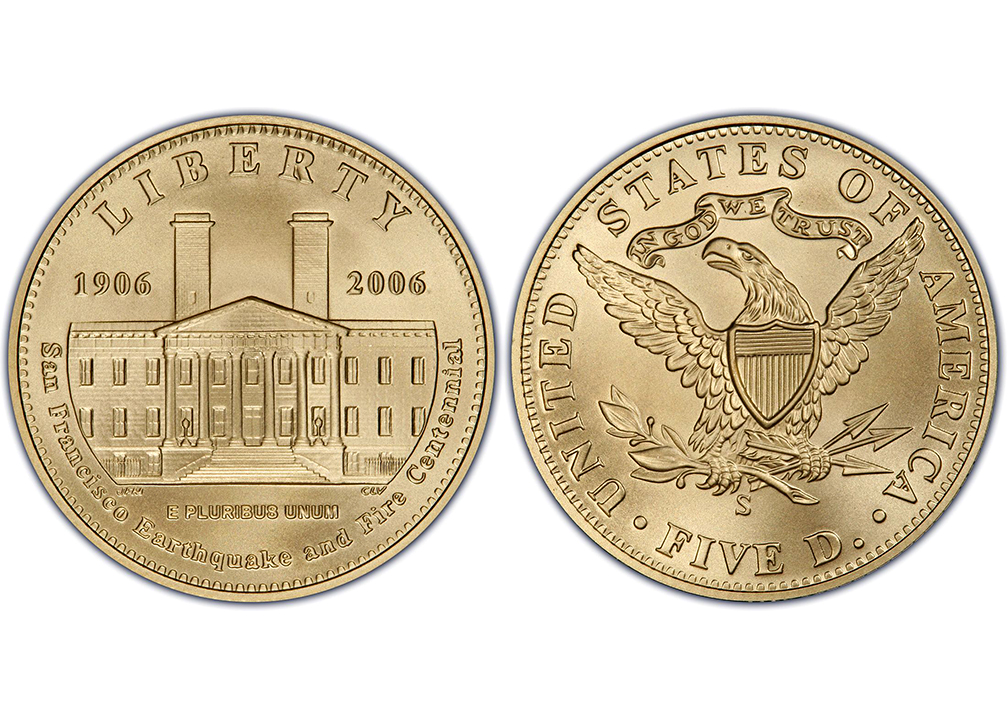RON HENGGELER |
August 8, 2015
The Old Mint . . . San Francisco's Granite Lady
The City and County of San Francisco recently terminated a development agreement with the San Francisco Museum and Historical Society, thereby ending plans for a museum at San Francisco’s landmark Old Mint, built in 1874. I recently spent a day photographing the rooms inside this iconic and historic structure. Here are a few selected images from that day. The Old U.S.Mint now sits empty and neglected.
The white dot on this image marks Portsmouth Square; now days, the little park in Chinatown. But in the Spanish/Mexican days of the early 1800's, only one adobe dwelling stood for years at the site, a mere stone's throw away from the stinking muddy shore of Yerba Buena Cove and the bay. Just prior to the beginning of the Gold Rush in January of 1848, the area surrounding the square had very slowly over the years grown to become an outback village of about 600 inhabitants. But with the discovery of gold up north at Sutter's Mill, and subsequently, the unprecedented global migration of humanity that poured into California with the hopes of getting rich quickly; in a wink, the same area exploded into a rough-tumbled tent/shack city of 32,000 by the end of 1849. |
During the frenzied years of the Gold Rush, 81,000 people, (mostly men) from across the world, came pouring in to California. A great many of those men passed through San Francisco on the way to and from the gold diggin's. |
San Francisco in 1849 This is an image of San Francisco in 1849 during the height of the California Gold Rush. Newcomers to the city were astonished to find Yerba Buena Cove (today's Financial District) crowded with nearly 700 hundred abandoned sailing ships. The hysteria of gold fever was at such a high pitch, that many times when vessels came into port, sailors jumped ship before the anchor had dropped and the sails had been taken up. |
Boom-town San Francisco 1855 In 1849, people began rushing to California. They had heard stories of hills and rivers seemingly filled with gold. Soon the miners of the Gold Rush found so much gold that the President asked Congress to allow a new Mint branch to open in California. With such a facility, California gold would no longer have to be sent to Philadelphia for coining—a slow and dangerous trip. Congress agreed in July of 1852. By April of 1854, a new facility had been built and its coin presses began turning miners' gold into coins. By the year's end, more than four million dollars worth of coins had been produced, all bearing a new mint mark: "S" for San Francisco. |
With the California Gold Rush underway in 1849, the United States Mint was overwhelmed with the task of turning all that gold into coins. Also, transporting it all to Philadelphia for coining was both time-consuming and hazardous. So in 1850, President Millard Fillmore recommended that a branch of the United States Mint be established in California. Congress approved the plan in 1852, and the San Francisco Mint was born. In 1854, the San Francisco Mint opened its doors and began converting miners' gold into coins, producing $4,084,207 in gold pieces by December of that first year alone. The new mint soon outgrew the small brick building in which it was housed. In 1874 it moved to an imposing new facility, with walls of stone, resembling an ancient Greek temple. |
|
The Mint's production of coins was uninterrupted for 32 years, until the disastrous earthquake of 1906. Because the gas works were partially destroyed, operations stopped temporarily. But the beautiful, solidly constructed Mint building survived both the earthquake and the ensuing firestorm. In fact, the Mint was the only financial institution capable of operating immediately after the disaster and became the treasury for disaster relief funds, performing other emergency banking services as well. Coining operations resumed soon afterward and continued in this building until 1937, when Mint workers moved to a larger, more modern facility, the present United States Mint at San Francisco. |
|
|
|
|
|
|
|
The building that was constructed in 1874 was nicknamed "The Granite Lady" or just "The Old United States Mint" and was designed by the architect Alfred B. Mullett in a Greek Revival and Doric Order style. It was also one of the few buildings that survived the great 1906 earthquake in San Francisco. It was build on 88 Fifth Street and during its first year of operation, they minted $4 million worth of gold bullion coins. The building itself had a totally enclosed courtyard with a well in the center, which is one of the reasons that helped save the building during the fire of 1906 when it melted windows and made the granite and sandstone blocks blow up. |
|
|
|
Total Number of Quarters Ever Minted in San Francisco = 670,669,691 face value worth $167,667,423 Total Number of Half Dollars Ever Minted in San Francisco = 360,044,393 face value worth $180,022,197 Total Number of Dollars Ever Minted in San Francisco = 500,997,783 face value worth $500,997,783 |
|
|
|
|
|
In June this year, the 140 year-old landmark was named by the National Trust for Historic Preservation as one of America's 11 most endangered historic places. |
Total Number of Half Dimes Ever Minted in San Francisco = 2,382,001 face value worth $119,100 |
Total Number of Dimes Ever Minted in San Francisco = 952,971,374 face value worth $95,297,137 |
Total Number of Twenty Cent Pieces Ever Minted in San Francisco = 1,155,000 face value worth $231,000 |
|
|
Total Number of Gold Dollars Ever Minted in San Francisco = 90,232 face value worth $90,232 Total Number of $2.50 Gold Quarter Eagles Ever Minted in San Francisco = 745,502 face value worth $1,863,755 Total Number of $3 Gold Coins Ever Minted in San Francisco = 62,101 face value worth $186,303 |
|
Detail of the cast iron stairs to the attic of the Old Mint |
|
|
|
|
In writing an article for the San Francisco Chronicle in 1928, a reporter was given a tour of the San Francisco building where United States Mint coins were made. In the department where gold and silver were separated, the reporter was amazed to see that the workmen were using solid gold scoops. Each scoop was valued at one thousand dollars! (This was in the days when you could buy a new car for less than $2,000.) The reason the scoops were made of gold is that acids were used in separating the metals. If the scoops were made of any other metal, the acids would have eaten them away until they couldn't be used any more. Gold was simply the most practical material for the purpose. The front-page story appeared in the newspaper on March 11, 1928. |
The California Gold Rush In 1846, only about 800 people were living in the San Francisco area. But in early 1848, after gold was discovered at Sutter's Mill, 75 percent of those residents abruptly left to avoid the anticipated flood of people who would be descending on their quiet little hamlet. The following year, thousands of pioneers and fortune-seekers did, in fact, head west during the great California Gold Rush. In 1852, Congress authorized a branch mint at San Francisco to strike coins from California's vast reserves of gold. The first mint building was erected in 1853. It used equipment from the old San Francisco assay office and presses made from Philadelphia that were shipped west. The first gold deposits were received on April 3, 1854, and the first coin was struck on April 15. In 1878, silver coins were added when the San Francisco Mint began striking Morgan Silver Dollars. Morgan Dollars became a mainstay at the San Francisco Mint, which struck Morgans every year they were produced. Some of the Mint's finest strikes were seen in its Morgans because of the quality and mint luster exhibited. |
|
|
|
|
|
Total Number of $5 Gold Half Eagles Ever Minted in San Francisco = 28,028,008 face value worth $140,140,040 Total Number of $10 Gold Eagles Ever Minted in San Francisco = 14,558,406 face value worth $145,584,060 Total Number of $20 Gold Double Eagles Ever Minted in San Francisco = 88,254,526 face value worth $1,765,090,520 |
|
Birth of "The Granite Lady" From its inception, the San Francisco Mint was more than just a coin producing facility. Gold ore was also brought to the mint where it was refined, made into ingots and, as needed, made into coins. The original building proved to be a small, hot and noisy facility that was poorly ventilated. In 1867, mint officials agreed to purchase land at the corner of Fifth and Mission Streets in San Francisco to expand operations. This was undoubtedly welcome news to the 40 or so employees toiling in the cramped confines of the original building! Construction was completed in 1874. Where the first mint consisted of only 6,000 square feet, the new and improved structure was 73,221 square feet. Hailed as "The Granite Lady," it got its name for its massive two-story structure built out of granite to handle the heavy minting equipment. This second building remained in operation for 63 years. |
|
The Granite Lady's size, strength and sturdy construction proved to have an added bonus when it survived the Great San Francisco |
|
|
The Turn of the Century The Turn of the Century was truly a golden age for the San Francisco Mint because coins produced there garnered more respect than paper bills. In 1937, a new building was erected to replace The Granite Lady. Reflecting the changing times that relied less on coins, this third building consisted of 33,000 square feet — less than half the space of the old Granite Lady. |
|
|
Oh, Rats! For some people, working around money creates a strong temptation to be dishonest. That was certainly the case for one maintenance man at the US Mint in San Francisco, if the legend is true. It seems the building had a problem with rats. The maintenance man had the job of getting rid of the pests. As rats died, he would throw them out a window into an alley, then pick them up at the end of the day and bring them to a garbage dump. This particular man thought he could steal himself some gold by stuffing coins into the rats before he threw them out the window. When he later picked up the rats, he removed their stolen cargo before bringing them to the dump. Of course, when gold goes missing, people notice. The man was caught before he got away with much loot and was quickly brought to justice. |
|
|
|
|
In 1961 the Old Mint, as it had become known, was designated a National Historic Landmark. It also became a California Historical Landmark in 1974. The given name of "The Granite Lady" is somewhat of a misnomer as most of the building is made from sandstone. While the base/basement of the building is made of granite, the entire external and upper stories are made of sandstone. The Granite Lady was a marketing term given in the 1970s that stuck. |
During World War II, the mint struck coins for the Philippines, but its role in U.S. coin production vastly diminished after the war. It was determined that $360,000 could be saved annually if the mint shut down and the final coins were struck in 1955. Due to a coin shortage in 1965, however, the mint was briefly revived and produced coins until 1981. In 1982, the mint discontinued production of general strike coinage, but, almost in deference to the skill and artistry exhibited by the San Francisco Mint in its long and storied history, Proof coins and commemoratives are still struck there today. Vivid reminders of the mint's glory days, these coins represent some of the finest examples of coinage being struck in the world today. |
|
|
|
|
|
Total Number of Nickels Ever Minted in San Francisco = 1,076,486,848 face value worth $53,824,342 |
Total Number of Small Cents Ever Minted in San Francisco = 6,027,667,039 face value worth $60,276,670 |
The iron stairs leading up to the attic of the Old Mint |
The iron stairs leading up to the attic of the Old Mint |
The iron stairs leading up to the attic of the Old Mint |
The San Francisco Mint is a branch of the United States Mint, and was opened in 1854 to serve the gold mines of the California Gold Rush. It quickly outgrew its first building and moved into a new one in 1874. This building, the Old United States Mint, also known affectionately as The Granite Lady, is one of the few that survived the great 1906 San Francisco earthquake. It served until 1937, when the present facility was opened. |
The San Francisco Mint is a branch of the United States Mint, and was opened in 1854 to serve the gold mines of the California Gold Rush. It quickly outgrew its first building and moved into a new one in 1874. This building, the Old United States Mint, also known affectionately as The Granite Lady, is one of the few that survived the great 1906 San Francisco earthquake. It served until 1937, when the present facility was opened. |
The attic of the Old Mint |
The iron stairs to the attic of the Old Mint |
|
|
There was a great danger after the earthquake and fire in 1906. The San Francisco mint held $300 million worth of gold, which was equal to one third of the entire United States gold reserves. This gold was essential to backing up the US currency. Frank Leach, the Superintendent of the mint, along with his men were able to protect the gold supply, bullion and the building throughout this disaster from being looted or stolen. In fact, this earthquake could have put the entire US nation in jeopardy had a foreign nation or thieves stolen all of the gold reserves. Once the city recovered, the mint continued striking coins right on up to 1937. |
Within the first year of its operation, the San Francisco mint turned $4 million in gold bullion into coins. The second building, completed in 1874, was designed by Alfred B. Mullett in a conservative Greek Revival style with a sober Doric order. The building had a central pedimentedportico flanked by projecting wings in an E-shape; it was built around a completely enclosed central courtyard that contained a well—the features that saved it during the fire of 1906, when the heat melted the plate glass windows and exploded sandstone and granite blocks with which it was faced. The building sat on a concrete and granite foundation, designed to thwart tunneling into its vaults, which at the time of the 1906 fire held $300 million, fully a third of the United States' gold reserves. Heroic efforts by Superintendent of the Mint, Frank A. Leach, and his men preserved the building and the bullion that then backed the nation's currency. The mint resumed operation soon thereafter, continuing until 1937. |
The attic of the Old Mint |
The view on the roof of the Old Mint |
The view on the roof of the Old Mint |
|
|
|
In the basement of the Old Mint |
|
|
The very secure San Francisco Mint building may have been the target of burrowing thieves at the turn of the 20th century. Though the building was made to withstand any earthquake, someone may have discovered the building's weakness—its Achilles' heel. In December of 1901, watchmen at the San Francisco Mint began hearing muffled explosions about 4 a.m. for several nights. They felt light shaking in the basement—though there was no earthquake activity. Something was clearly wrong. While an investigator searched the neighborhood for a tunnel, the Superintendent had the $70 million of gold coins moved up to a vault on the second floor. He also found Mint records that showed that basement vaults C and D had no concrete foundations. Built to be workrooms, they could easily be broken into through tunnels from below. |
But by January 11, 1902, Leach reported that the noises had stopped. Maybe moving the coins, adding guards, and searching the neighborhood were enough to make the culprits change their minds. Or maybe it was the traffic. As reported in the book This is San Francisco: "It is said that a man tried to tunnel under Mission Street to the Mint's basement vaults. For months, he burrowed there like a mole. Halfway to his goal, the heavy Mission Street traffic jarred loose the ceiling of his tunnel. It caved in, and he crawled from his hole more dead than alive." So, if there was a tunnel, it probably no longer exists. By now, it would have caved in because of heavy traffic or earthquakes, like the one in 1906. |
A boiler in the basement of the Old Mint |
|
In the basement of the Old Mint |
|
The Famous "S" Mint Mark The San Francisco Mint was established as a result of the nation's most famous gold rush. It's survived challenges from earthquakes, fires and production demands that tested its capacities. The epic history of this prestigious mint spans over 155 years and today, many people believe that the coins produced there with the famous "S" mint mark are some of the most beautiful U.S. coins ever struck. |
|
|
|
Interesting Facts and Coin Statistics of the San Francisco Mint Total Number of US Coins Ever Minted in San Francisco = 9,898,632,193 |
|
Newsletters Index: 2015, 2014, 2013, 2012, 2011, 2010, 2009, 2008, 2007, 2006
Photography Index | Graphics Index | History Index
Home | Gallery | About Me | Links | Contact
© 2015 All rights reserved
The images are not in the public domain. They are the sole property of the
artist and may not be reproduced on the Internet, sold, altered, enhanced,
modified by artificial, digital or computer imaging or in any other form
without the express written permission of the artist. Non-watermarked copies of photographs on this site can be purchased by contacting Ron.
